In the beginning, there have been only rumors, but serious debates are taking place on the Japanese blogosphere now! This deserted house creates passions. I will try to restore the pieces of the puzzle to solve the mystery of the Royal House. And if you missed the first episode, Royal House.
Thank you for considering this research as a tribute and show the respect that this family should have.
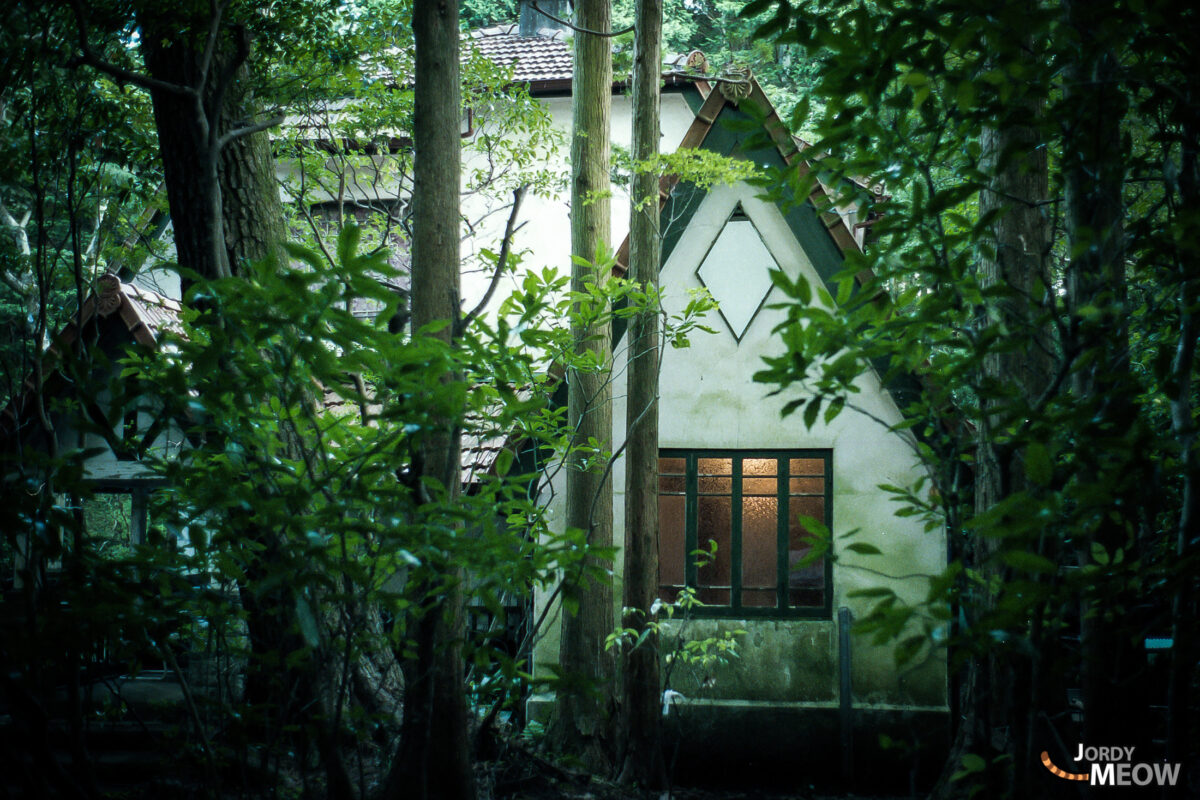
The previous article on the Royal House released very broad details: it was a first visit and I had no idea of what I have discovered. I have returned to the core of the matter for a bit more by studying the information and facts that I already have, and I will try to connect them before establishing any hypotheses. The urban exploration by Scotland Yard!
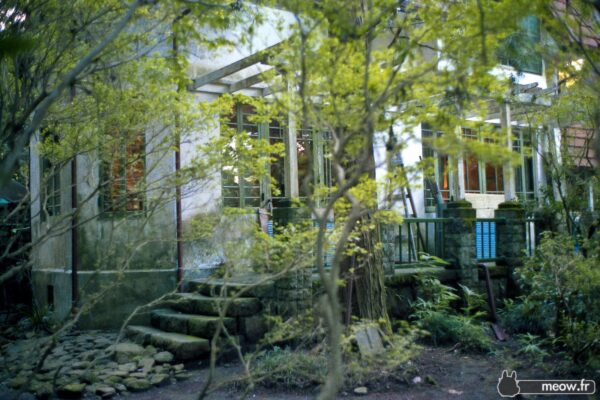

Letters sent to Kiyomi Kawai at the Okura Hotel and many different bills (of the same hotel) are piled up at the entrance of the house. So, I have a first track and then a top destination: the Okura Hotel in Tokyo.
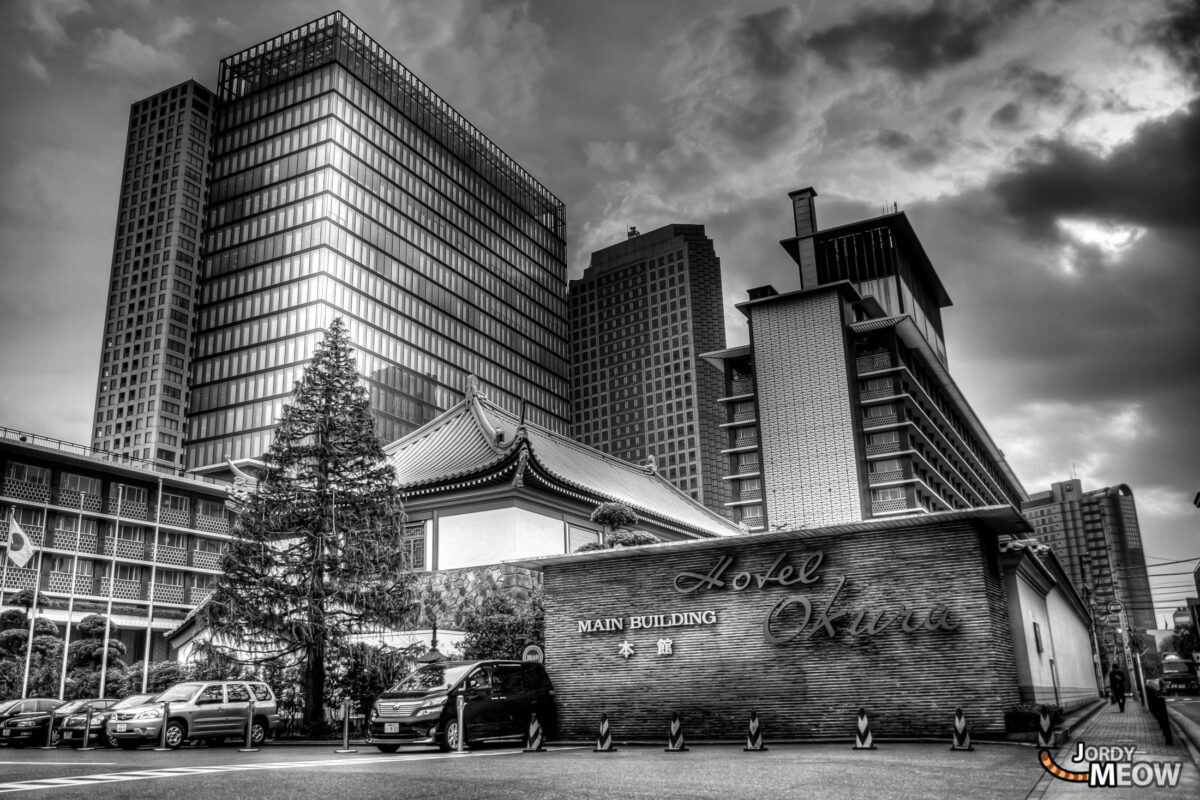
I show up first a little innocently at the reception to check whether a certain Kiyomi Kawai is still living there. “Oh! There was a long time ago!” I was told, after 5 minutes of fierce battle with the old computer. “But these are private information.” Of course. Then I spend the afternoon to explore the hotel, talk to the old tenants of the stores, employees of the cafe … but other than the smell of old carpet clean, I will remember very little. There are only two people from the same period as the Kawai and, according to them, if the family was rich enough to live here, they must have been shopping elsewhere. Sure, that must be it. Fortunately, I have another track.
A Temple in Tokyo
Many pictures of the family tomb, and also, a “Thank you” letter dated 1973 are to be found in the house. The “Thank you” letter comes from the temple which takes care of the tombs, thanking the Kawai family for their very generous donation. A new destination!
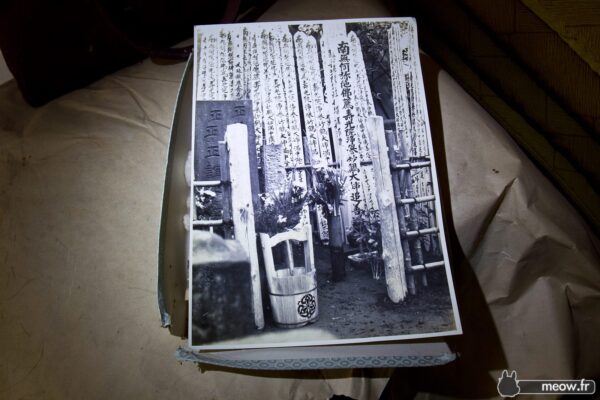

The temple is relatively small, but it should make things easier. The small house of the family who owns the temple is located nearby. I install the largest lens on my camera, put it on my shoulder and knock on the door. I choose to play the role of a reporter for the “20 minutes”, a free newspaper from Paris. Within seconds, an old man opens the door. He knew the family, does not remember very clearly, but he provides some interesting details, nevertheless (including names and dates). Then he opens his register and shows me a page entirely dedicated to the family. The information, scribbled, is not very comprehensive: there are different names, no dates, no identified links, but many facts that I will use in this article later. That’s all I needed!
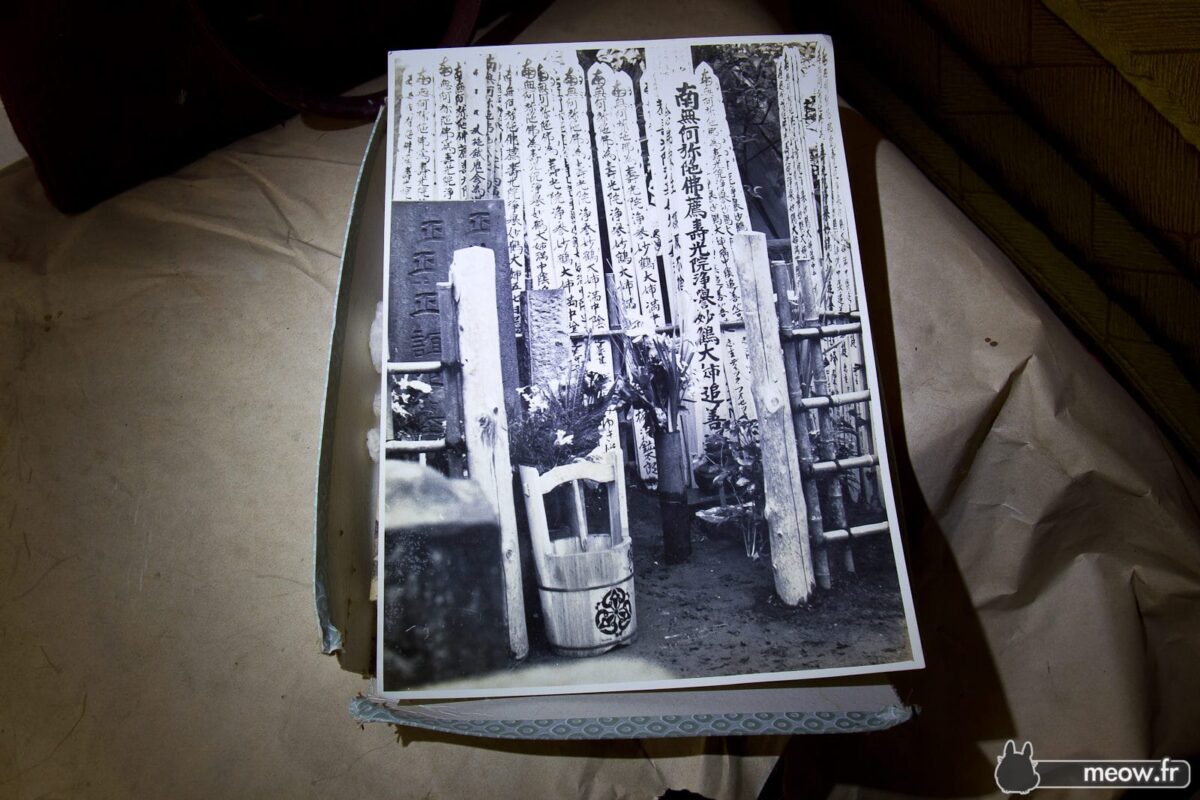
I feel like I have entered the last stronghold of post-mortem information of the family. Except for this small temple, and especially the memory of this old man, who may have information as well? Further on there is also the tomb of the family. There is no one left alive and they have no offspring. The tomb- very rarely visited – was also moved to another field. It’s really sad! This family is forgotten for good! I feel it’s time for a sincere prayer.
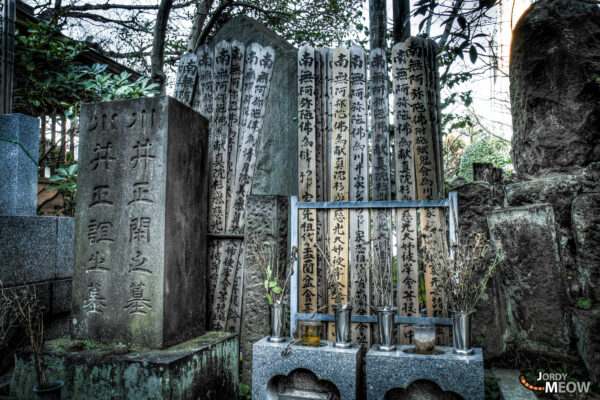
John and Sugiko are on the same Sotoba (wooden board where Buddhist register a kind of prayer accompanied by the name of the deceased). A foreigner is buried with his Japanese family – interesting. With the information I have now, I can have a different perspective of the numerous photos, and make new connections. But before going any further, here is a presentation of the main characters.
The Characters
The Mother. Kuma Kawaii (… – 1965)
She looks very severe in all the photos, surely because she is very old.
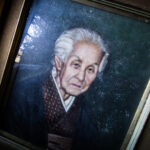
The Father. Masaki Kawaii
He is cut out from all the photos, impossible to know how he looked like.
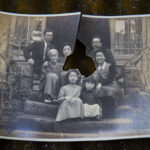
The “Gaijin”. John Jerwood (1918 – 1991)
The English gentleman that was found earlier beside Queen Elizabeth.

John’s Wife. Sugiko Kawai (1919 – 1997)
Married to John, so we can name her Mrs. Jerwood.
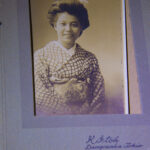
Sugiko’s Brother. Junji Kawai (… – 1982)
Sugiko’s older brother.

Older Sister. Kiyomi Kawai (1912 – 2004)
Sugiko’s big-sister.
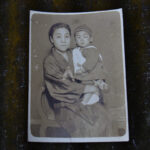
Younger Sister. Kiyoko Kawai
The younger sister of Sugiko.

Now, back to the abandoned house! Trying to discover the characters, their history and that of the house.
The Father : Masaki
The father is a complete mystery. There are many old photos of the family, but each time he is “cut out”. Why? Impossible to see his face. It is also possible that just John (the foreigner) is in these photos. According to other documents, the father was the owner of a large theater in Tokyo.
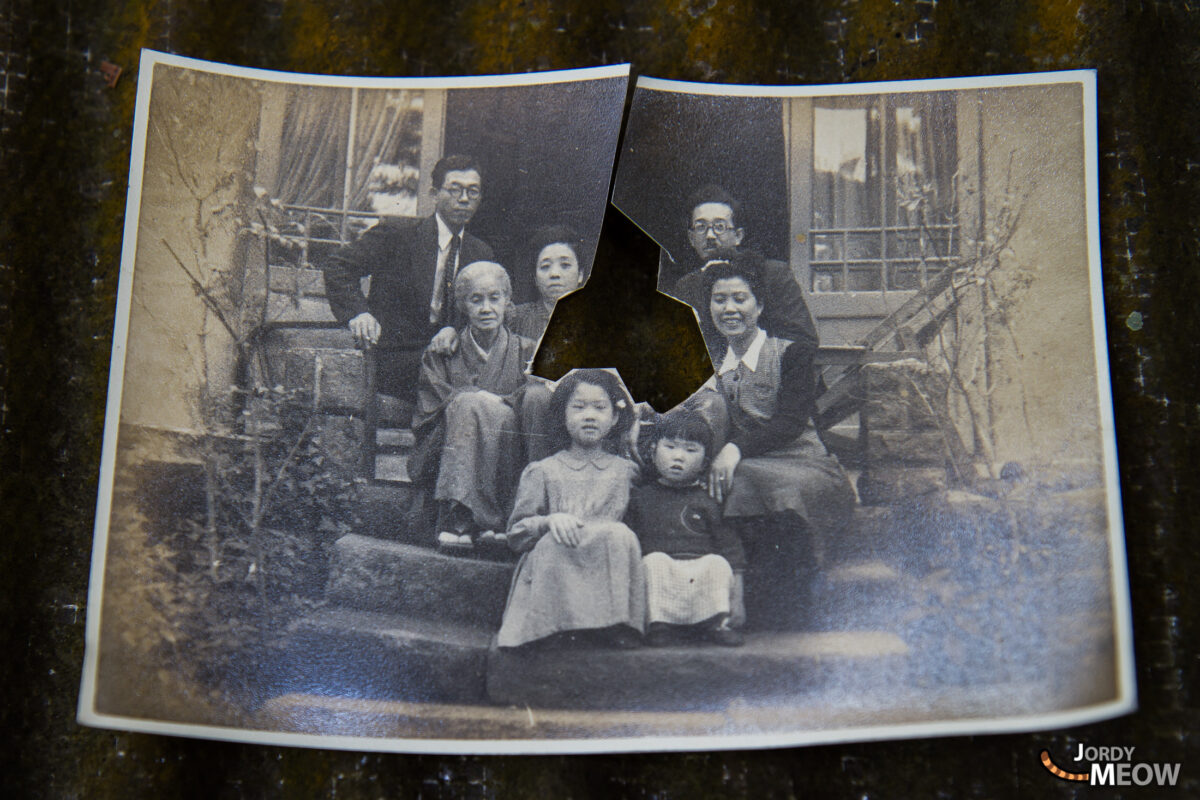
The Mother : Kuma
It’s an old lady in all the pictures. According to the old man from the temple, she has lived for over 90 years. She seemed to be well respected by the family and she is undoubtedly the most mysterious character of the family. Her gaze is not there for nothing.
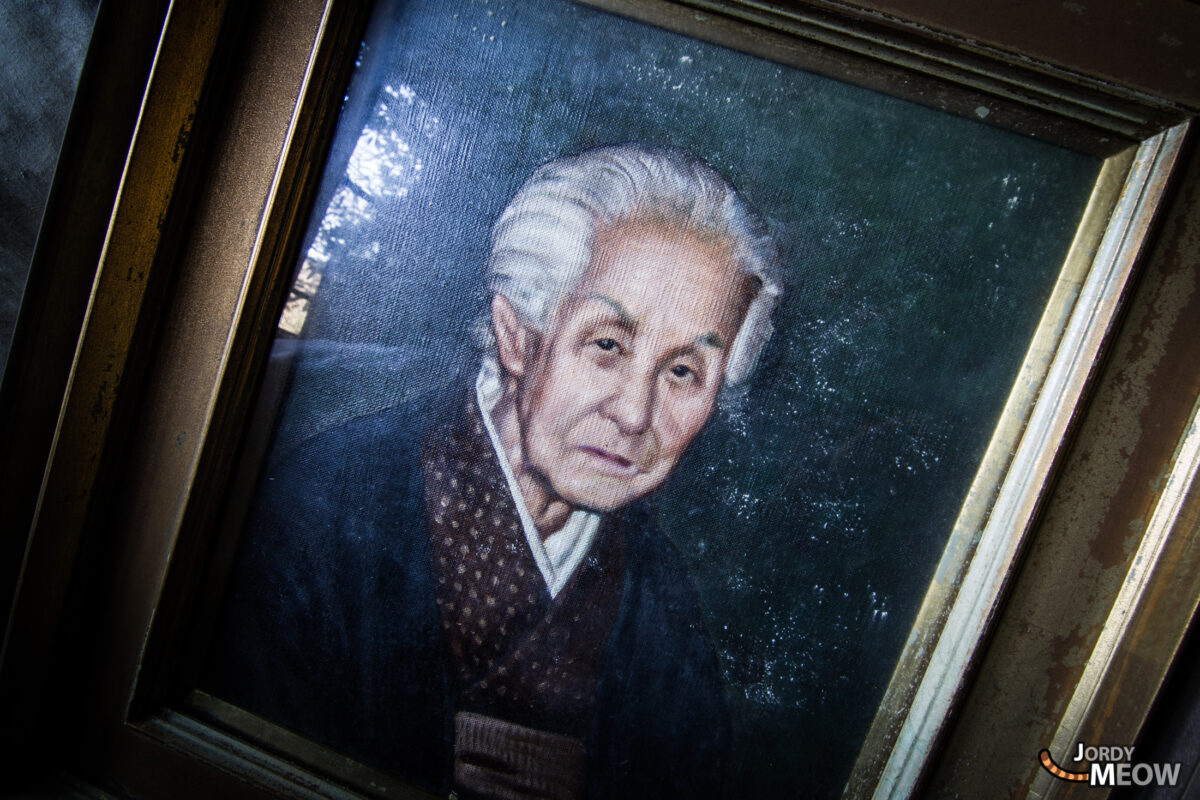
It seems that the old lady wrote stories about the Samurai in these pages. A hobby? No evidence. The text is very difficult to read, but if you can read Japanese, try it. She is probably well in her 80’s or 90’s in the photo below. We took the opportunity to make a small tour of the family: on the left, cut in half, it’s the older sister, Kiyomi. The youngest, Kiyoko, is in white, on the left. On the right, it’s John. His wife, Sugiko, is just on his left side. Mother is in the center. There are also two other foreigners in the picture.

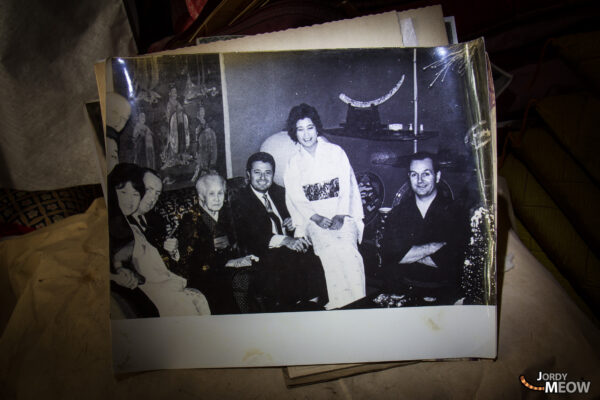
What does this strange document above represent? It is actually very valuable: it is an Imperial Rescript on Education (教育 ニ 関 スル 勅語) dating from 1890. It named the principles of Japanese education and was displayed in every classroom in Japan. This document was considered as sacred as the photos of the Emperor himself! It was banned after World War II and destroyed. But it is still there! Was the mother a teacher, who – after retirement – turned into a writer?
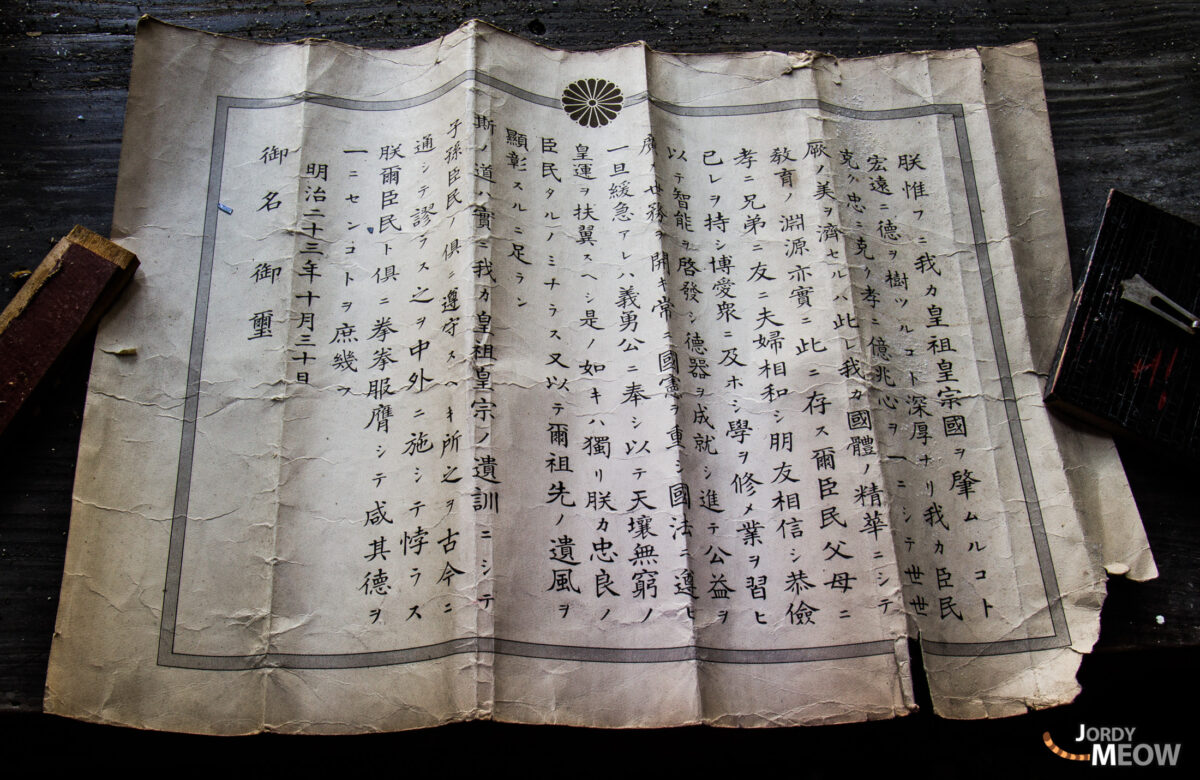
Here is another family member: Po-Po-Chan! He lived from 1972 to 1979; he hasn’t had the pleasure of meeting the grumpy cat Happy-Chan we’ll be encountering later. This pigeon (!) was apparently highly appreciated by the mother.
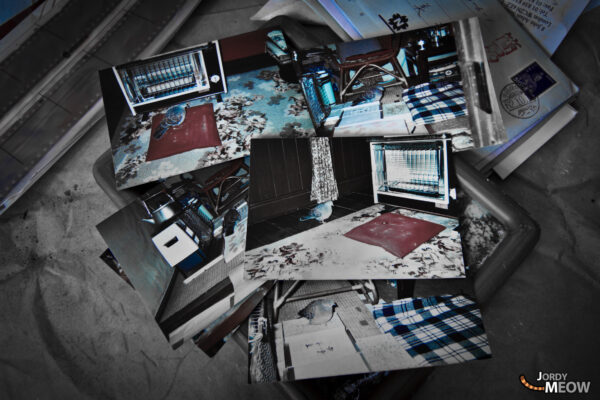
We end with a photo of the mother’s funeral. All family members are there, and very easy to recognize. Let’s get to the children.
The Brother : Junji
He worked as a diplomat during the reign of Emperor Hirohito. He was the guy who met John in Paris in 1936. There is also a very interesting letter in the house, signed by a certain Hatoyama: the grandfather of the former Prime Minister of Japan! This letter (also from 1936) recounts his trip to Europe and his meeting with leaders of major countries, including Hitler (visit the blog Ruins Rider, in Japanese). So, we find new “royal” connections!
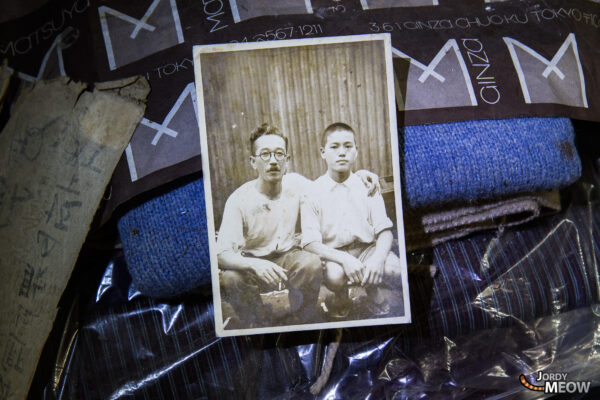
Junji would have had a boy, Masahiro. But the latter, who died at 4 years (according to the picture on the right), it’s probably not him here with Junji. The third generation of this family remains a mystery. Below, a bank statement of Junji, dating from 1949. Not very profitable.
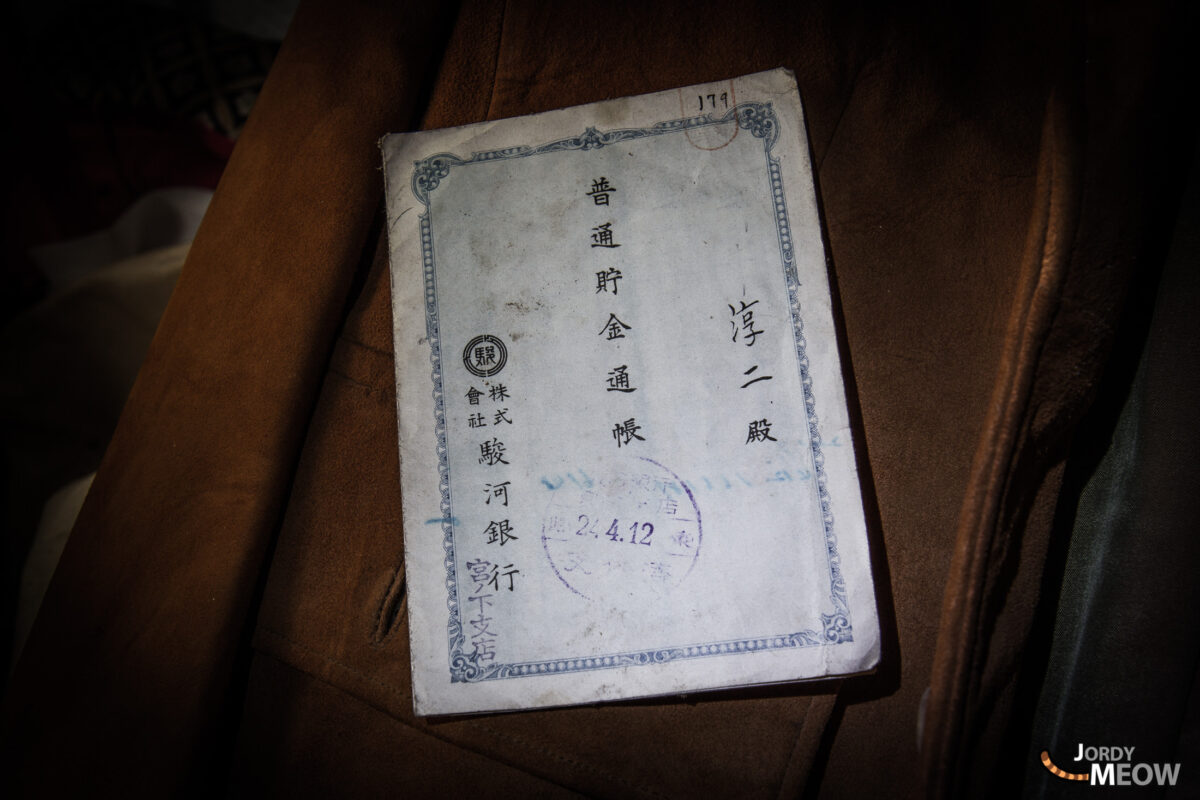
Photos of Junji are not numerous, but one often sees them in Tokyo or at home. I like the photo below right: Junji looks amused by the attitude of his grumpy cat, ironically named Happy-Chan. This big cat lived from 1956 to 1970.

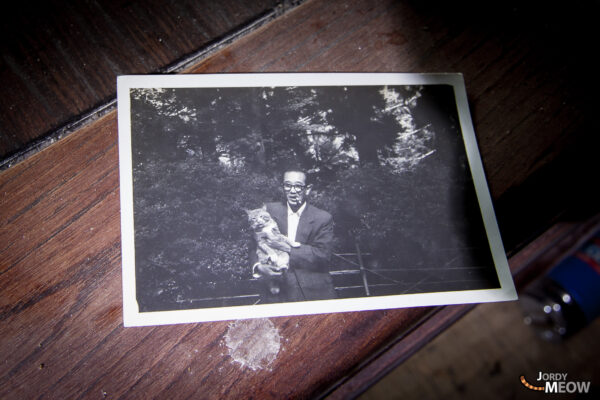
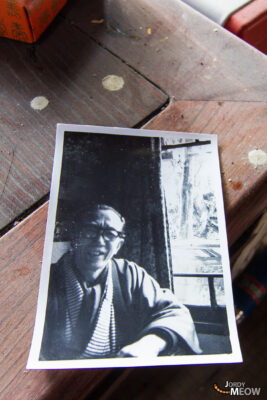
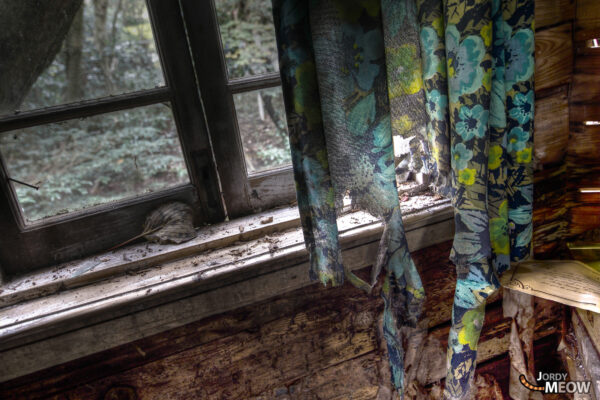
The torn curtain is the same as the one in the picture on the left. This proves that Junji has lived here. It seems, however, that the family is originally from department of Nagano (a birth certificate of Kiyomi proves that).
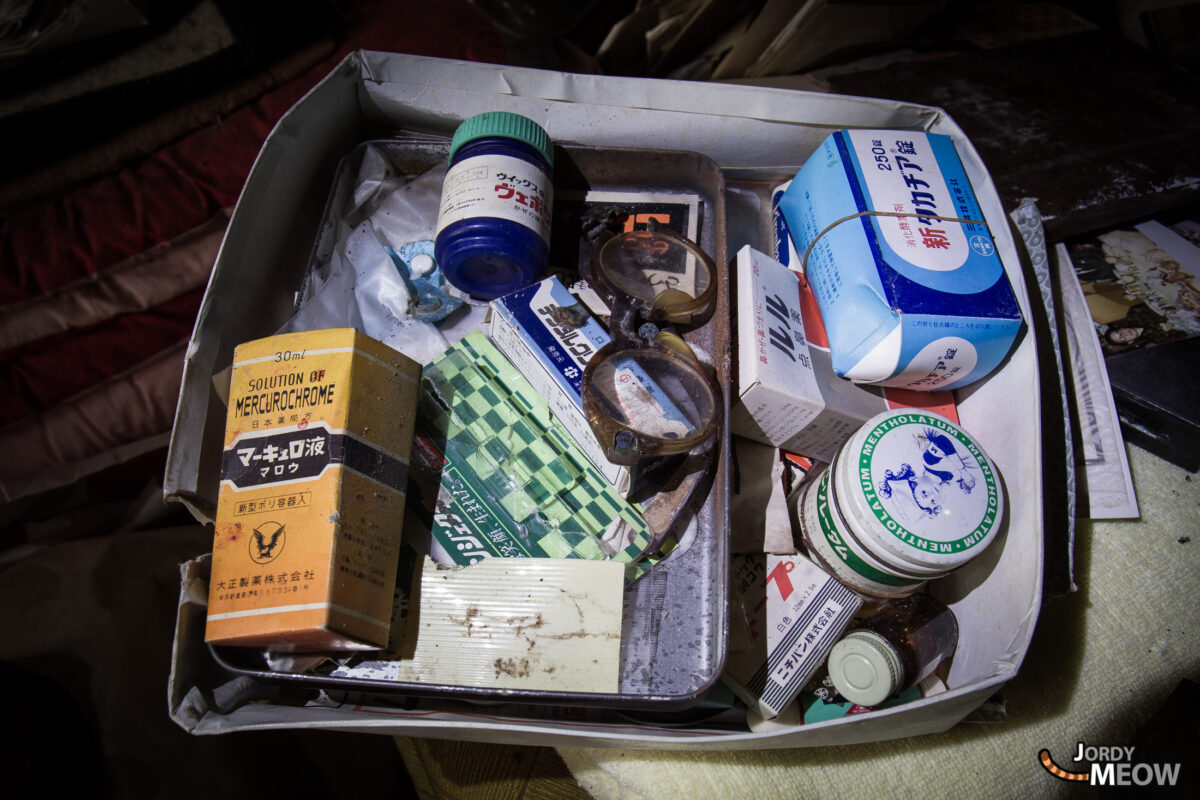
Have you noticed the round glasses that Junji features most of the time? Here they are. In a box, along with other personal belongings.
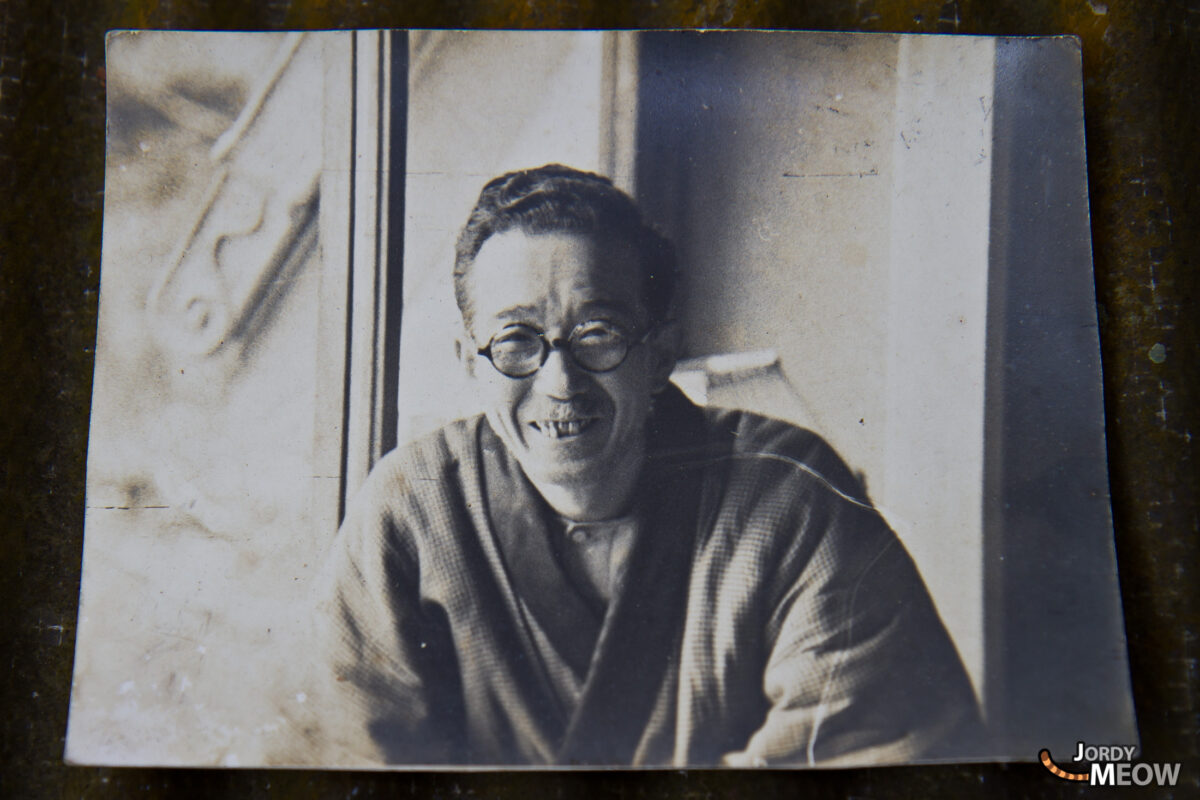
Many other old photos are present, as this dancing-hall. Probably in Tokyo. Later, in 1982, Junji dies, and we find the family gathered for the funeral. Even the sister (and the husband?) of John is present.
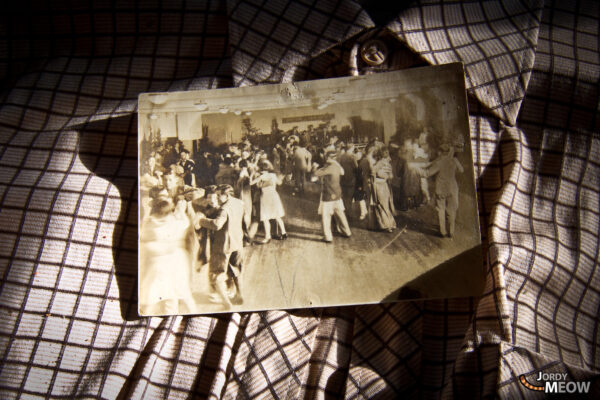
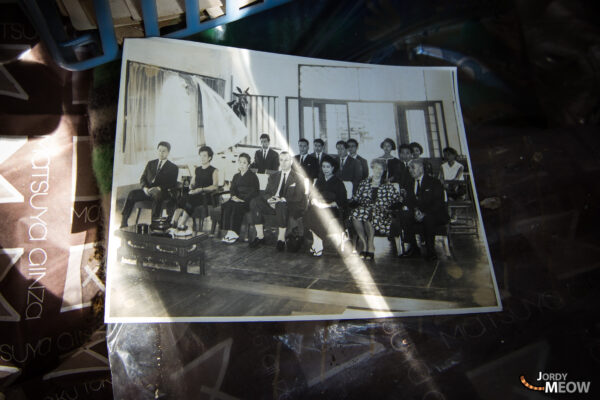
John Jerwood – The English Gentleman
John. He is the first person for whom it was easy to find information. He happens to be a “faceless” personality. You will understand later. His father was a general during the First World War, and died the same year that John was born, in 1918.


At the age of 18 (1936), John meets Junji in Paris. Difficult to know exactly why, but the father working for the Japanese government (and having a certain relationship with the pearl market) and John being from a good family (he was already working for his uncle in the trade of pearls), one can imagine a number of reasons for this meeting. Sugiko is very young (and sexy, like an old Japanese phenomenon) along with – possibly – her brother Torinosuke (born in March 1902) and John’s mother.
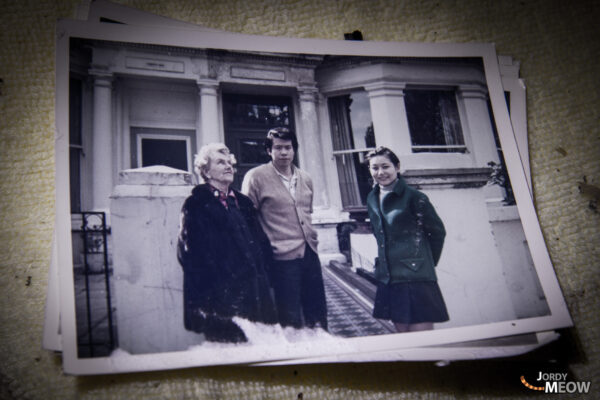
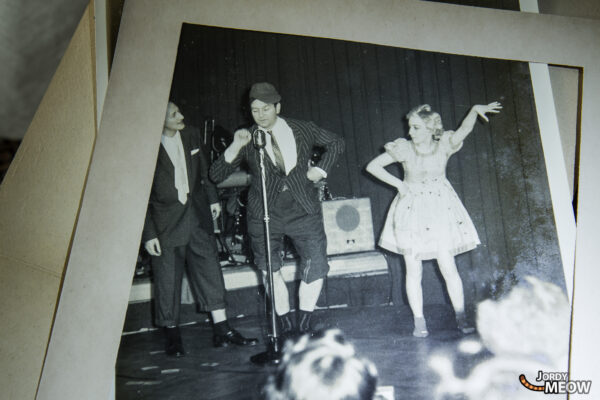
John finished his studies at a prestigious English school and he was immediately recruited to take part in the Second World War. While he was captain, he developed a strategy that had freed the town of Arielli from the Nazis. Thus, he would receive the Royal Cross in 1943, a very prestigious award.


He moved to Japan, and resumed the business of pearls completely independent from his uncle who had just died. This allowed him to become quickly rich. He built the house in 1948 and married Sugiko in 1950.

It would seem that the house was actually a gift for parents (and brother) because we do not really find any objects that belonged to John. On the contrary, there are many gifts: those 4 TV sets from the 50-60 that seem superfluous, the phonograph, and the video viewer (see previous article), and I’ll bet that the painting of the mother is also a gift. John and Sugiko live in central Tokyo, and travel a lot.
The Lady: Sugiko
Sugiko here very young, but less than on the first “sexy” picture. She was born on August 31th, 1919. Kiyomi, the older sister, was born in 1912, and her sister Kiyoko was born a few years later, on March 3rd.

John’s address in Tokyo is on his business card. He lived in Tokyo, so let’s go! Unfortunately, everything has just been demolished. We contemplate the Tokyo Tower in a rather gloomy setting. Small surprise, however: the Okura Hotel just steps away! Sugiko used to go there very often during the absence of her husband (before she was living here completely, much later).
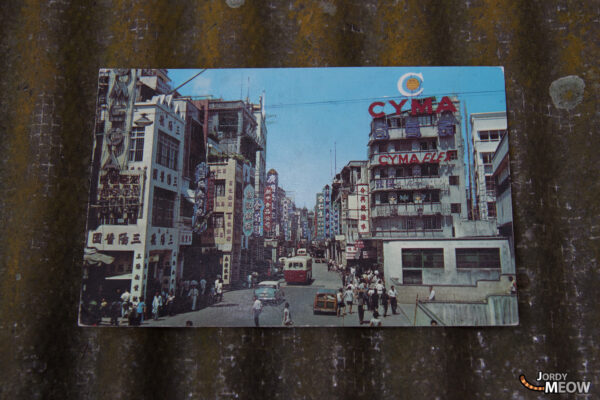
Back in the family. Kiyomi, yet young and pretty, is always alone, strangely. She is, however, married to a Japanese, and lives no longer with her family.
The house today. We find the same lamp as in the previous photo. So it was indeed the mother’s home as well. Also many references to pearls and even here is one. No, I will not touch it!
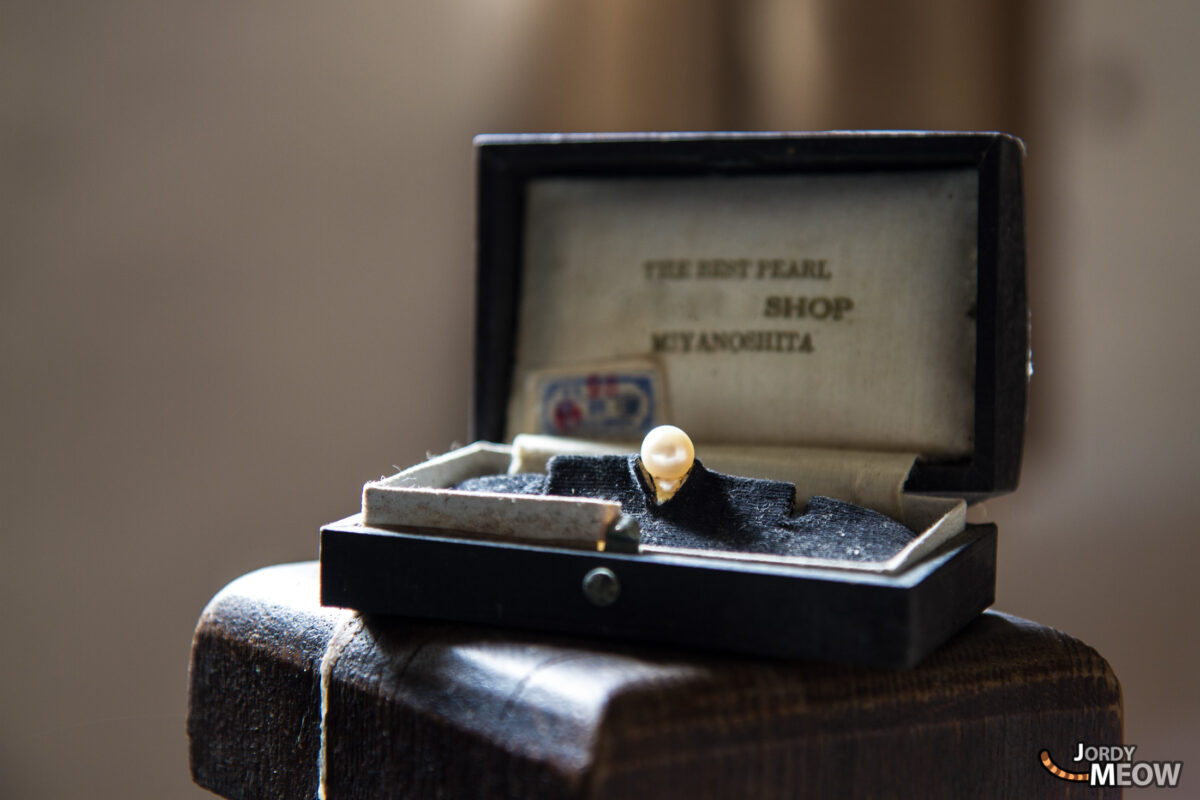
Many photos of receptions, dances… this family led the high life. Sugiko is getting along well with John’s sister and there are lots of pictures in which they are together.
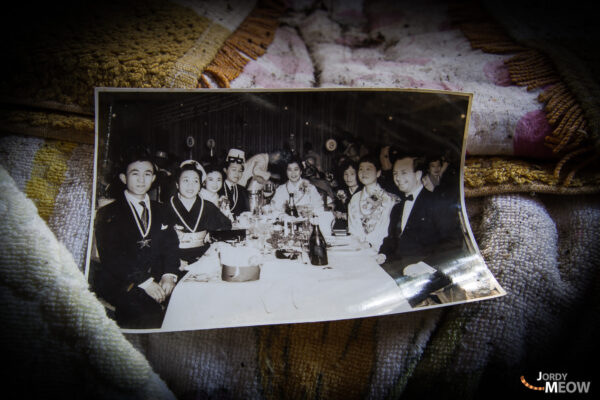
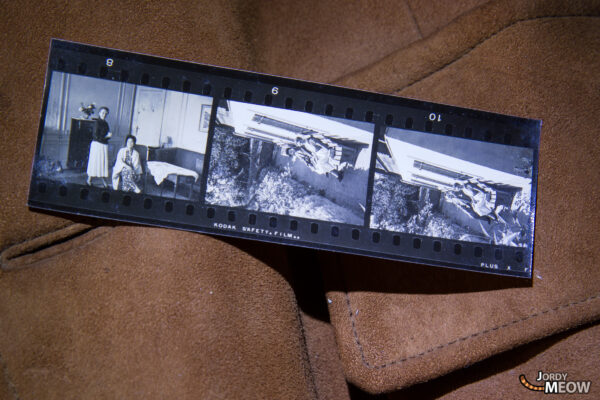
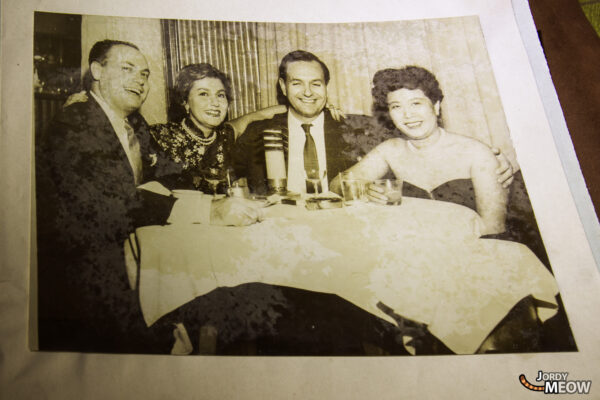
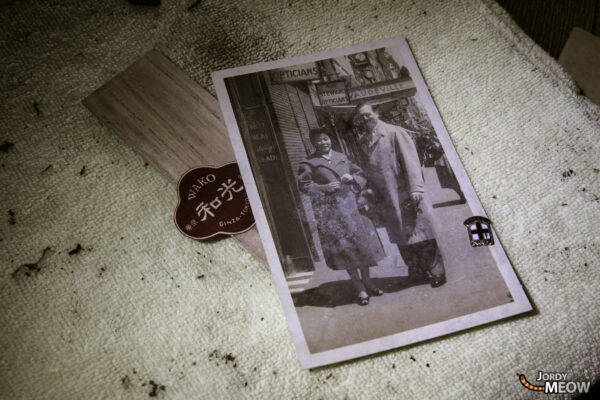
Japanese women cut their hair when they are young and keep them in order to reuse them when they are older. Sorry, this is perhaps not the best shot to finish a chapter, but you will get used to it 🙂
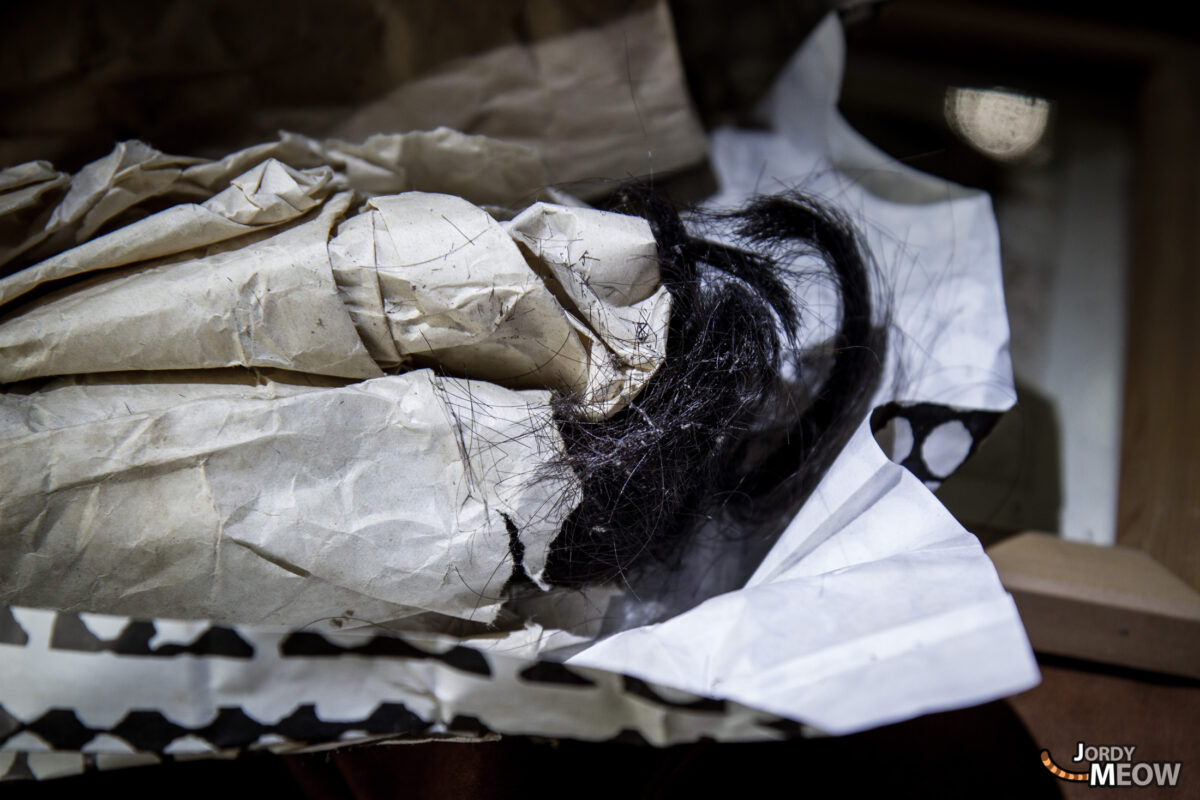
Unfortunately, we find virtually nothing about the lives of two other sisters. Kiyomi seems to have a life somehow sad, when the young Kiyoko has a husband and she lives a little separated from the family.
The Foundation (1977-1997)
John, so very rich, established a foundation in his name (Jerwood Foundation) in 1977. He made a lot of generous donations , thus explaining the existence of this photo where John is present alongside Queen Elizabeth. The Foundation is particularly active today, as it is very well known.
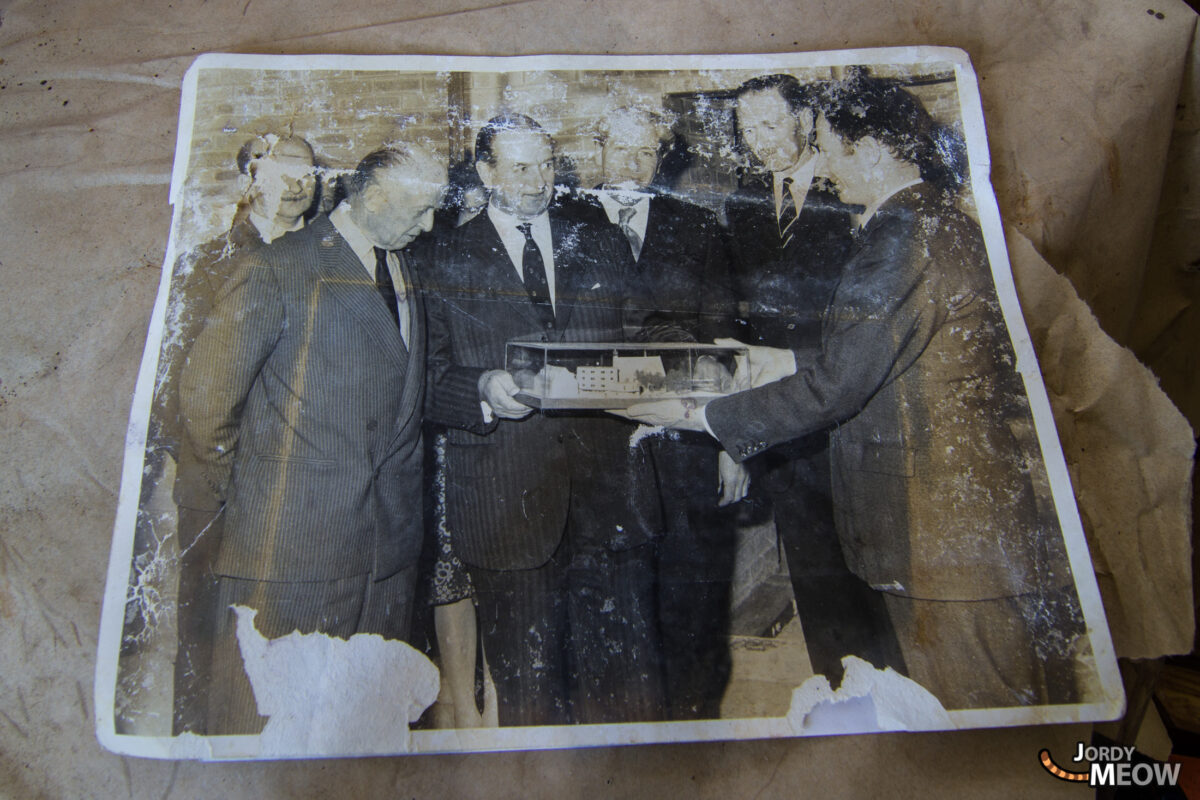
Gakuranman bought and reviewed a book about this foundation on an article devoted to him, and he especially noted that John was very little mentioned in the book. Isn’t he, however, the man behind many deeds that are done today? How can we forget that? How can this foundation let the precious artefacts from its founder’s life rot in the dark?
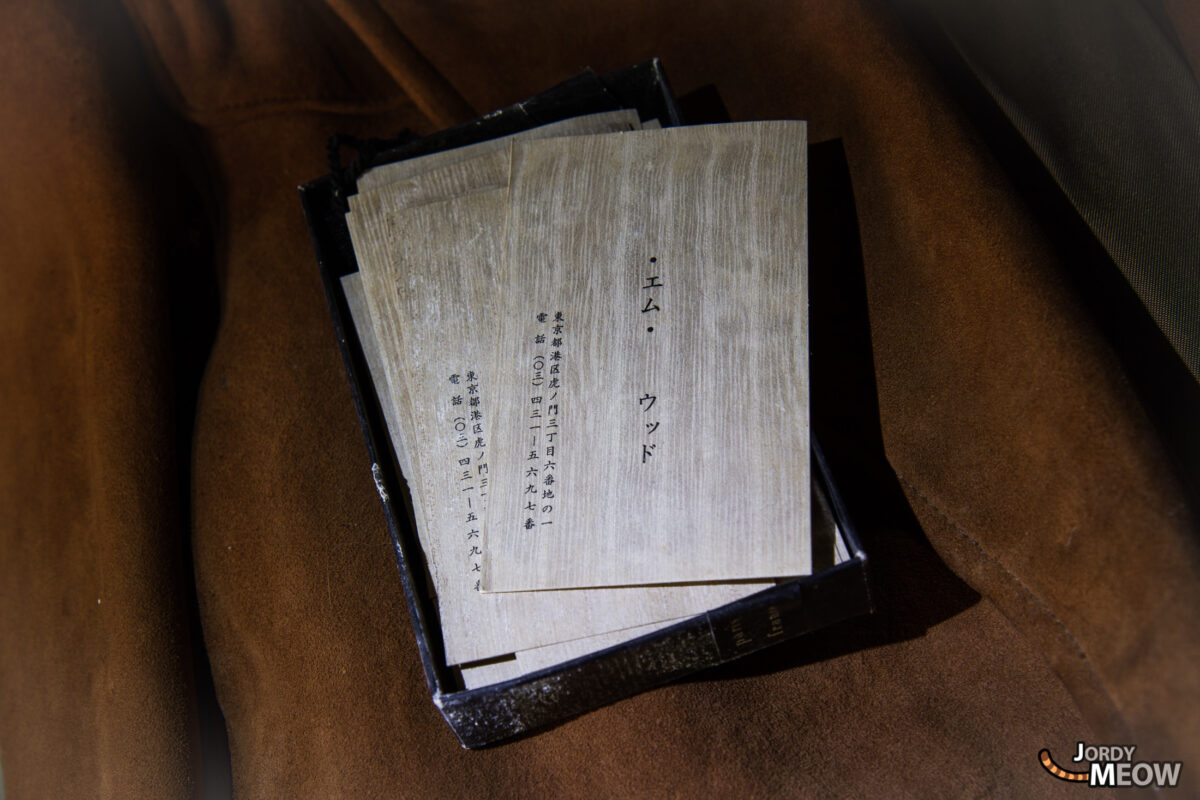

There are still traces of the family fortune in the house. Below, the shares from that period, cardboard! Investments mainly in the pharmaceutical field. These companies still exist today.
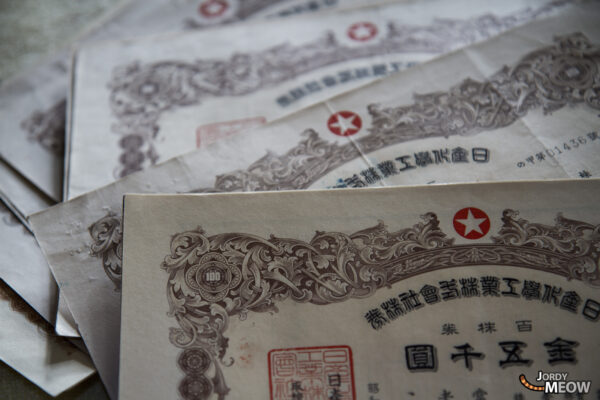
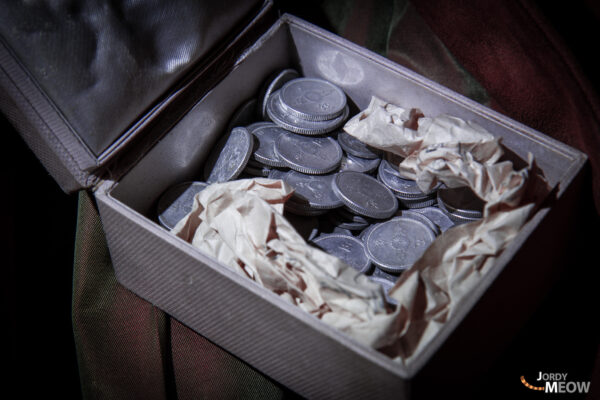
We approach the end of the story. This house was the residence of Junji’s mother, and the sisters probably lived there at certain times. It was probably also a sort of holiday home for John and Sugiko.
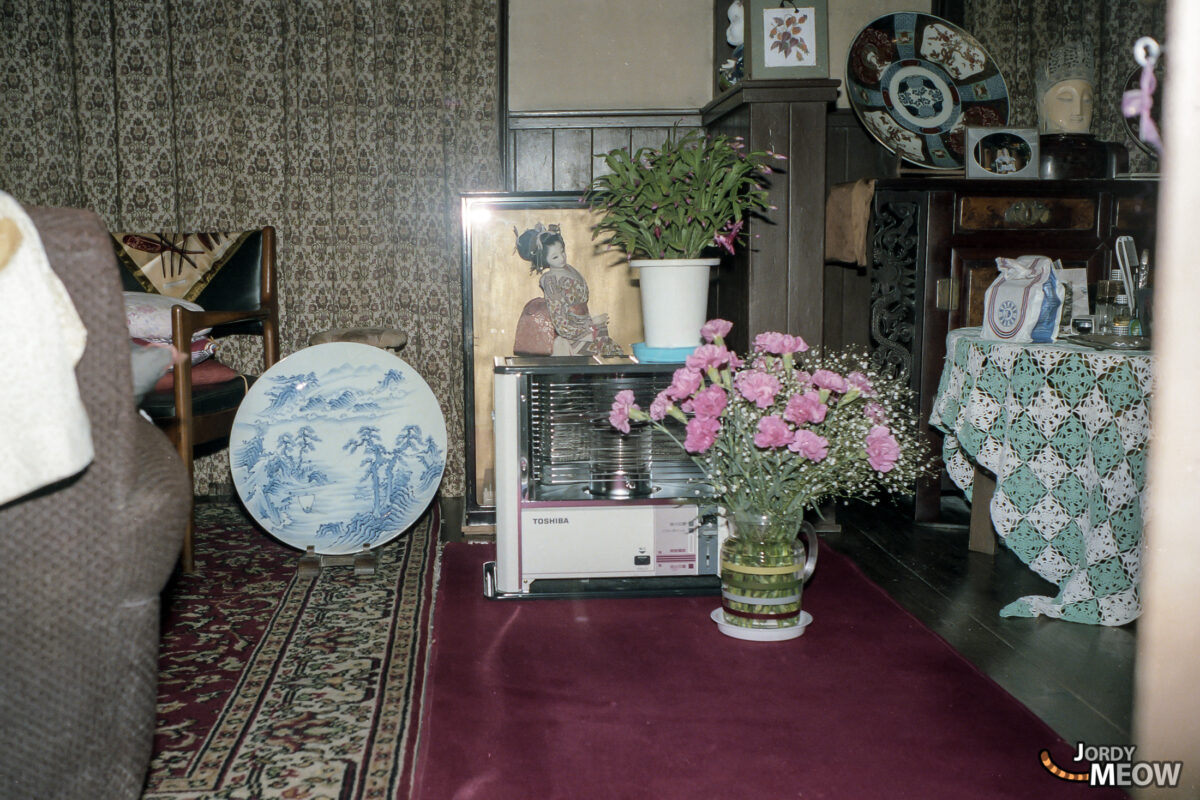
An article on the Okura Hotel, found on the floor in the house (1973). Towards the end, Sugiko frequents the cafe from the hotel every morning. A real ritual! (her residence is nearby, as we have already seen).
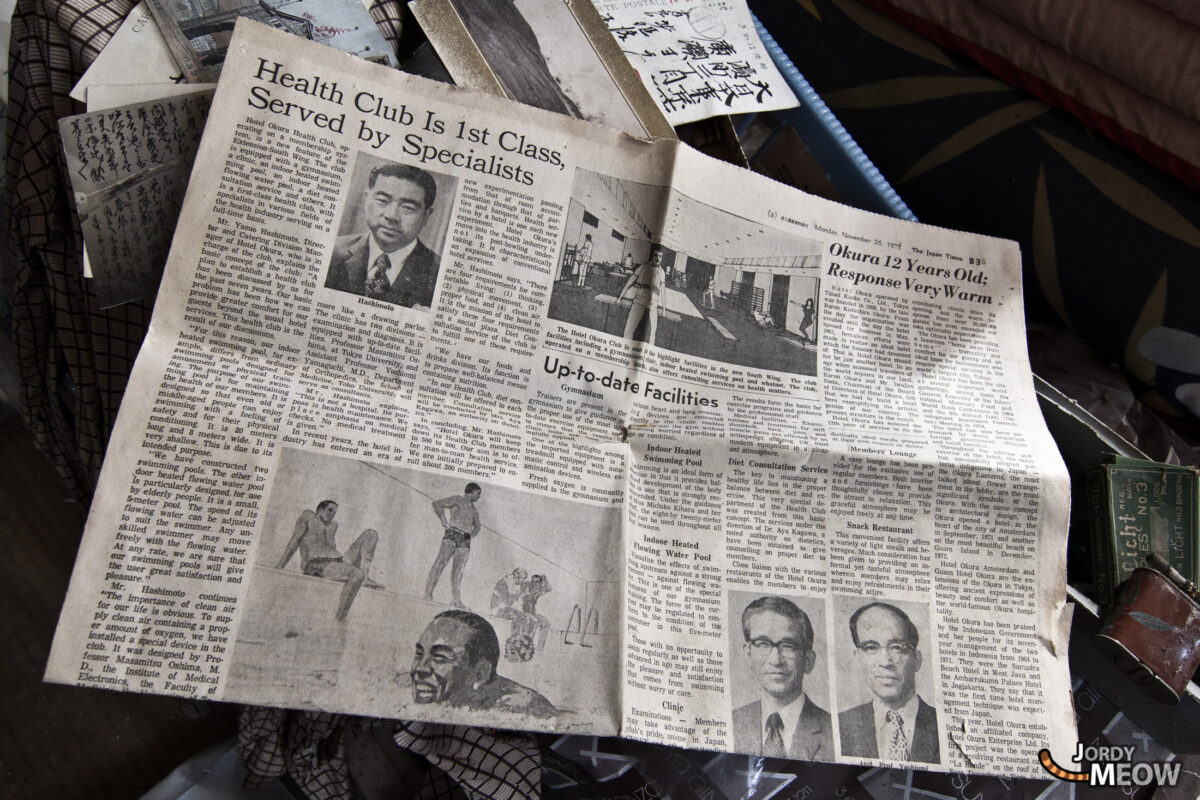
It seemed that Sugiko was a bit difficult as a client and the staff was stressed in her presence. But they did not envied her, John was absent too often. In the photo below, the three sisters are present, and John looks very old but always cheerful.

An old photo of a nice chest and the sister of John in the picture above. Unless it is a very old photo of his mother…
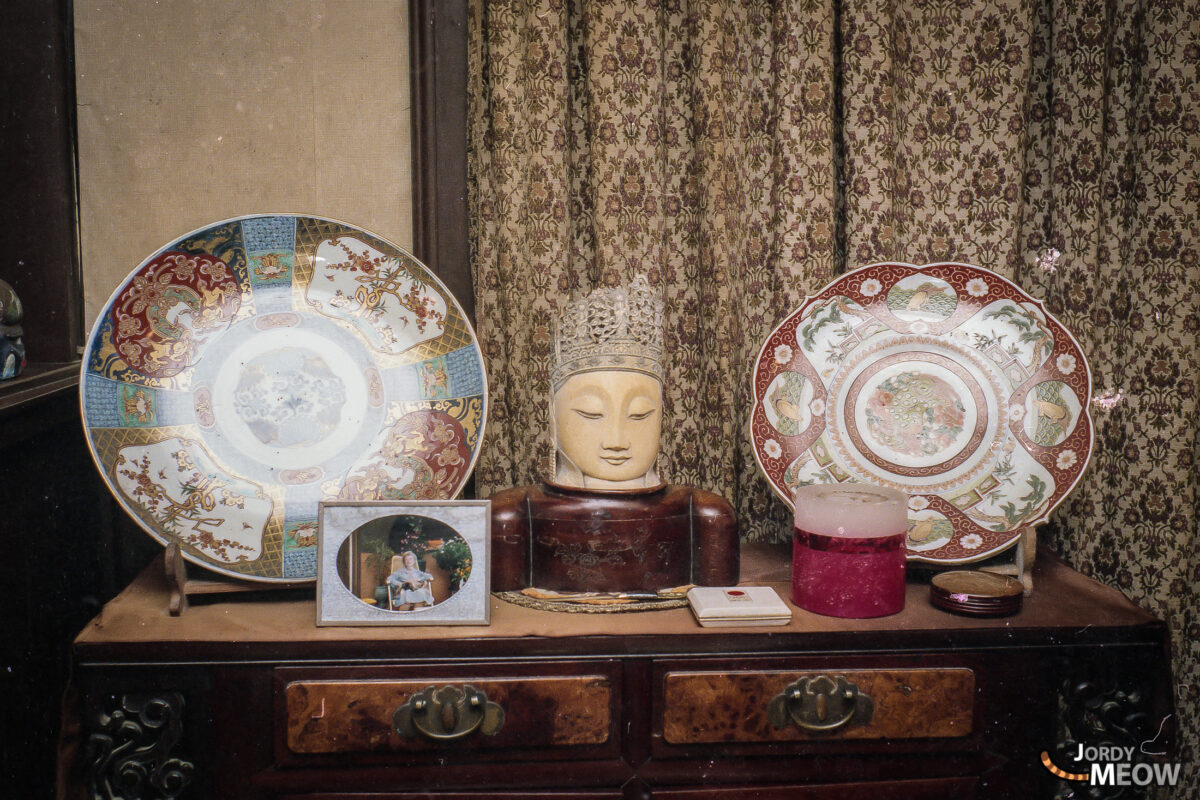
Here is the last picture bringing John, his sister, Sugiko and Kiyoko, together. Behind, employees of the Okura Hotel. John dies in New York in 1991. Sugiko and Kiyomi settle permanently in the hotel and continue their lives in a deep silence. Kiyoko lives her life with another family, elsewhere.
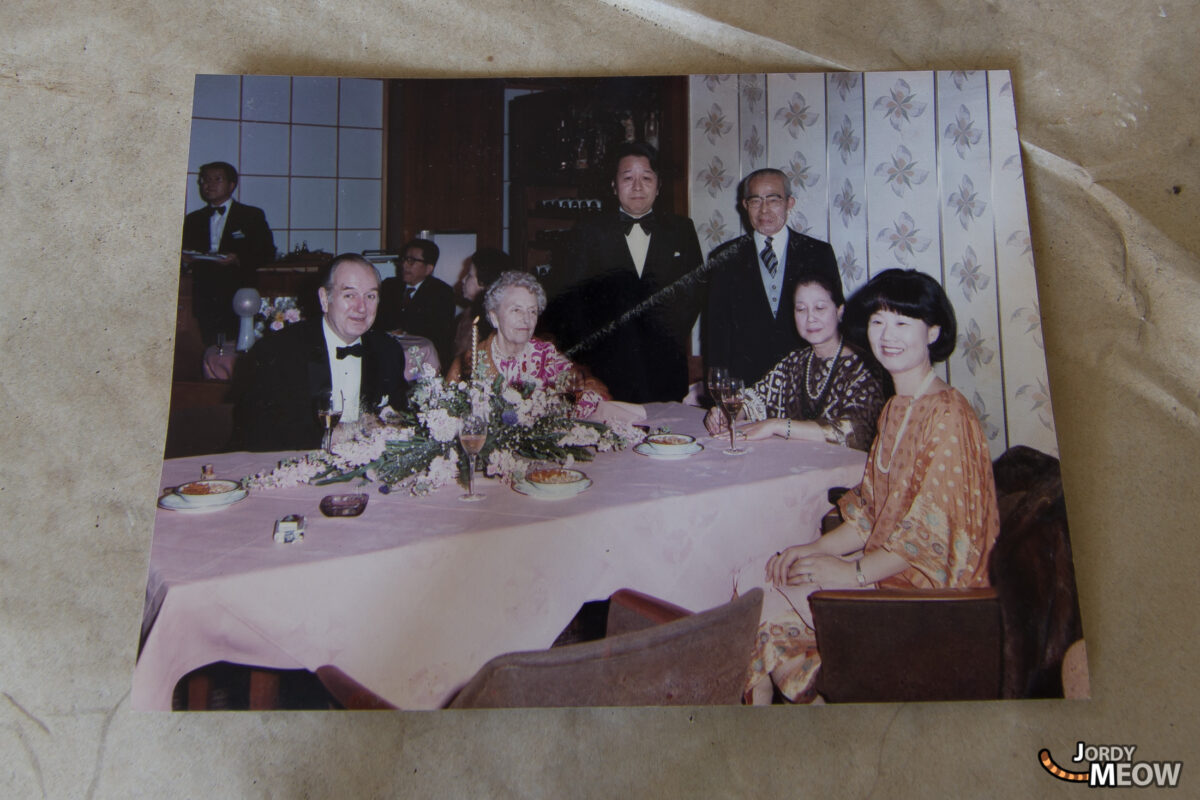
Here is a proof that Sugiko and Kiyomi lived together at the Okura Hotel. A thank you card from a certain Yuichiro (1992).
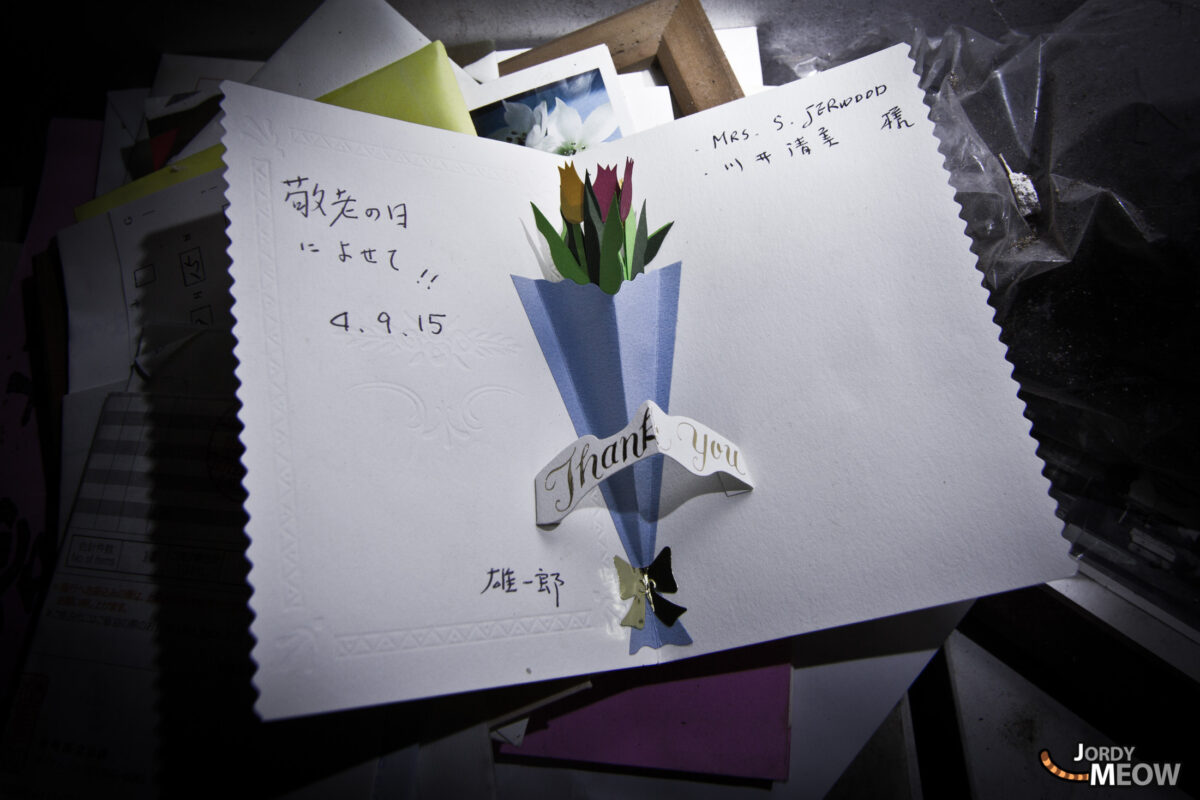
In 1997, Sugiko, age 78, dies, on her turn. The picture used for her funeral, where she is obviously wearing … a pearl necklace.
The Royal House
Years go by in silence. But there are comebacks, and photos to support it. Who is this person, who returns home after years of neglecting? But, with her long face and her hair pulled back, I think I recognize this old lady…

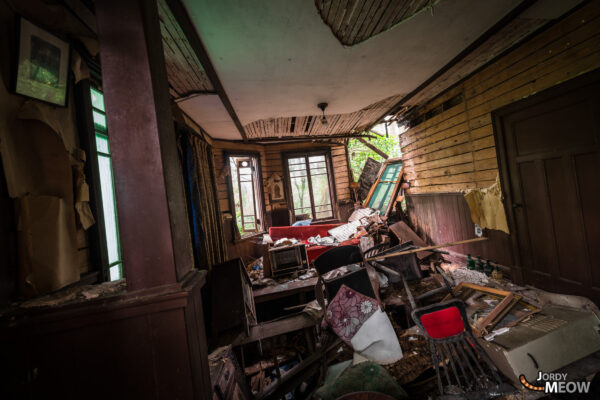
… Isn’t she Kiyomi? She comes home and plunges back into her memories. These old photos of the inside of the house show a place no longer inhabited (dust + very dirty television). They were taken on Kodak film VR CP-100, a film that was itself sold between 1983 and 1986. John himself could have taken these photos!

In my chronology of the family, there is a black hole of about a decade. The 80’s are hardly represented, except on two calendars in the house, one in 1982 and one in 1986, and the approximate date the photos were taken inside (between ‘83 and ’86, according to Kodak!). My theory: After the mother’s death (1965) and Junji’s (1982), the house is inhabited only by Kiyomi who later preferred to join her sister in Tokyo. They returned in 1986, when they took these pictures, and hung a new calendar. In the photos, the house looks very dusty: it has probably not been cleaned for 4 years! Sugiko died in 1997 at the age of 78. When Kiyomi’s death occurred in 2004 (91 years), the Okura Hotel sent all personal belongings to the old house by the postal service (Yamato). They are all stacked on the floor at the entrance.

The dining room today … but that’s also what she looked like before. By the way: look in the corner, top left, at the old picture! Mona Lisa.
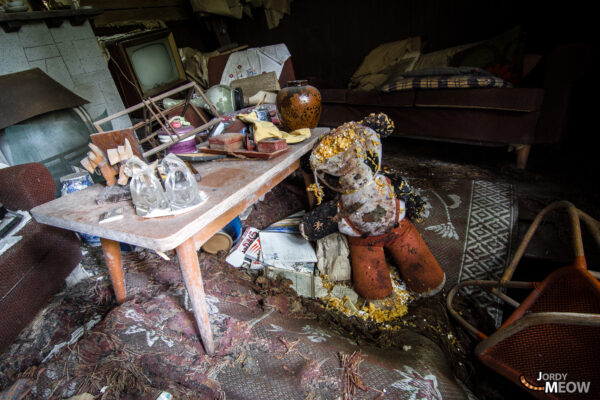
The watches of two lovers are still here. But which lovers are we talking about?
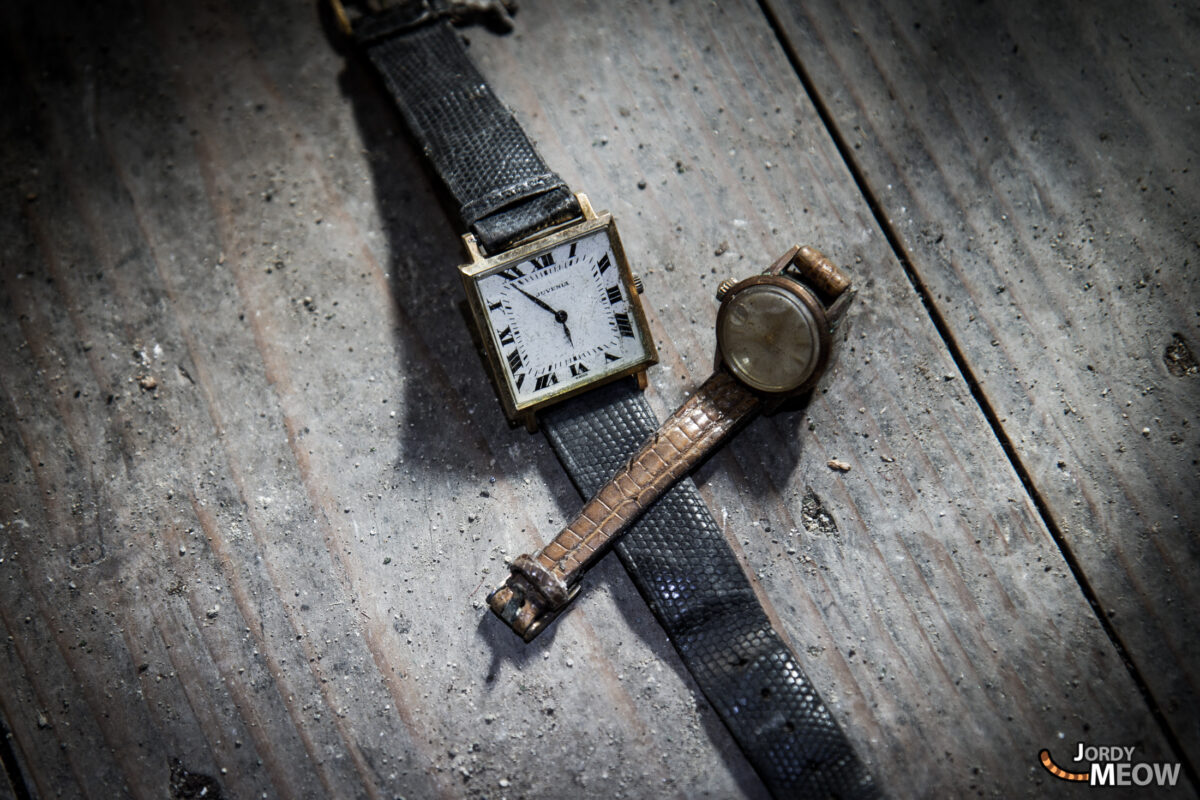
I almost forgot. The mysterious door! One that was locked! Well actually, it is just the toilet. And sorry to tell you that, but nothing is really hidden. And it seems clear that a Japanese family with such means never lived in a house with such a bathroom after the 80’s.
We now know the history of this house and of its main inhabitants. Let’s not dig up any more, and let them rest in peace, they deserve it.
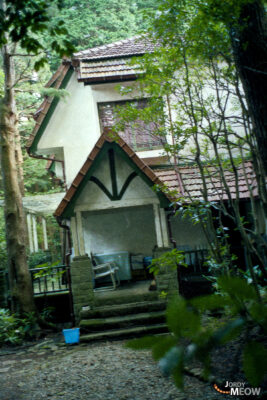
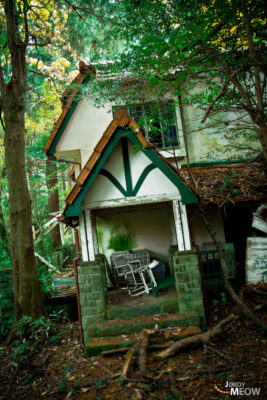
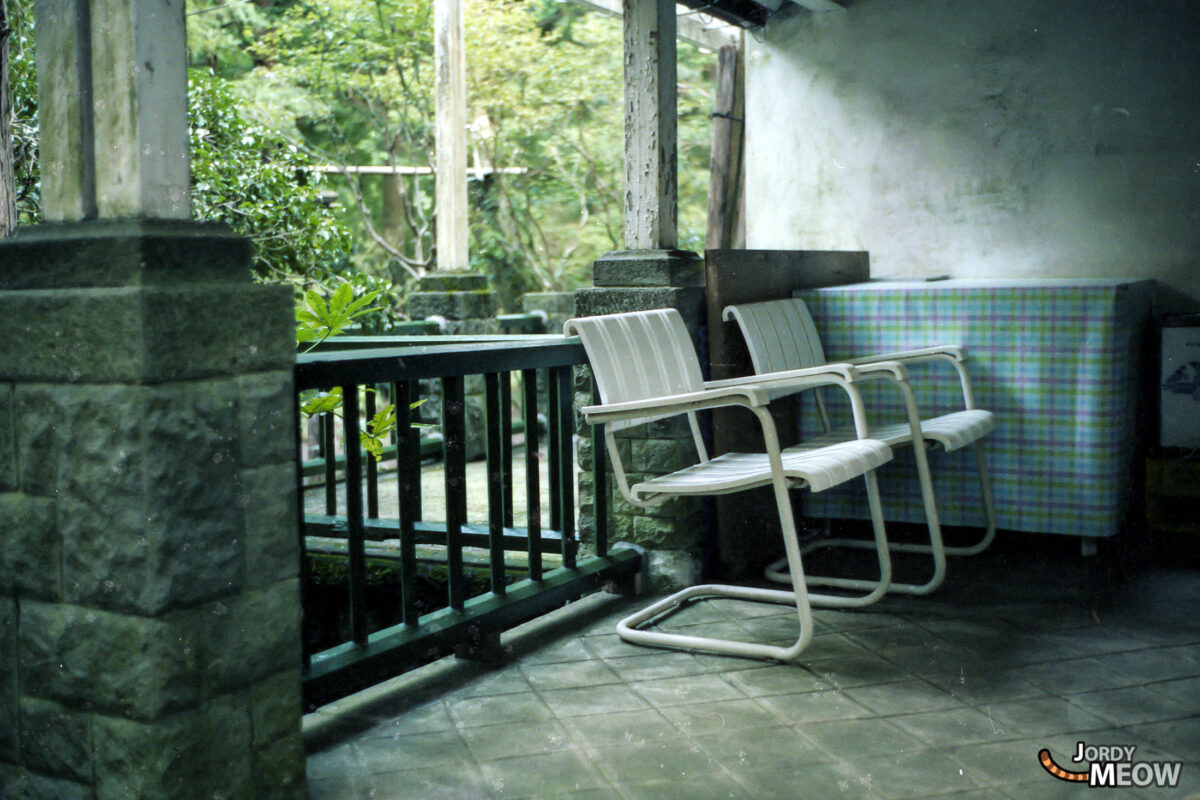
Four decades ago, it was the home of Kawai Junji, the cat lovers,
and his mother, Kuma Kawai, the mysterious novelist.
The house was abandoned in the late 1970’s,
but visited on several occasions until the late 90’s by the Kawai sisters.
The last official visitors are deliverers from Yamato,
who deposited the packages sent by the Okura Hotel in 2003.
The whole family K now rest peacefully near a beautiful temple in Tokyo…
…except for Kiyoko, who may still be living elsewhere.
And for more awesome content about Japan, follow Jordy Meow on Instagram ! 🎵

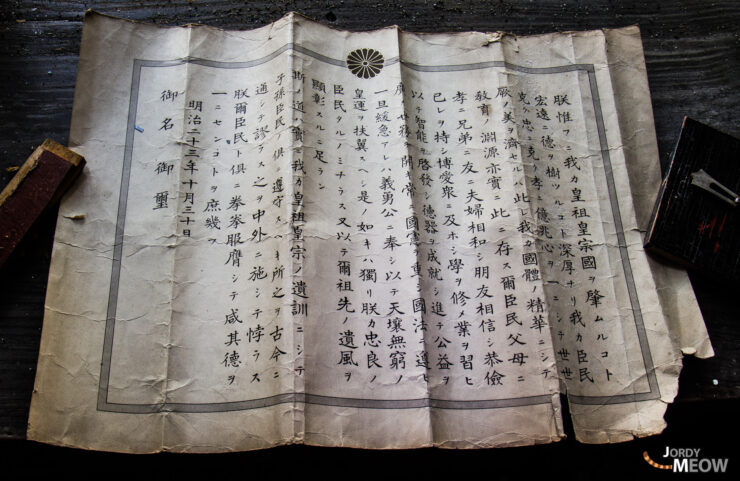
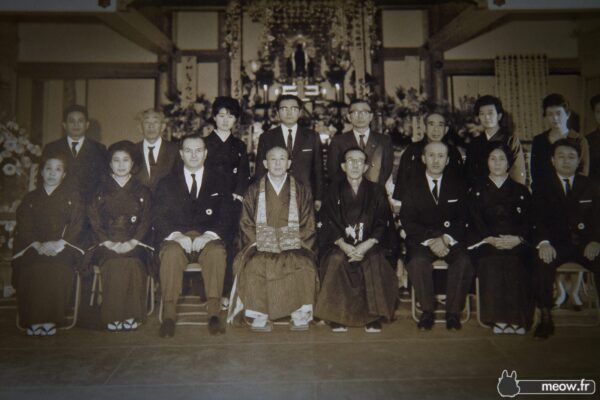

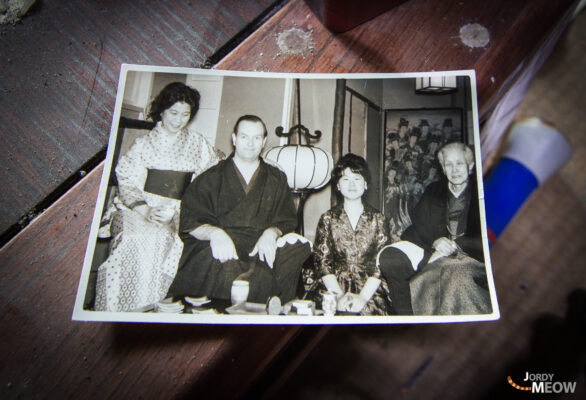
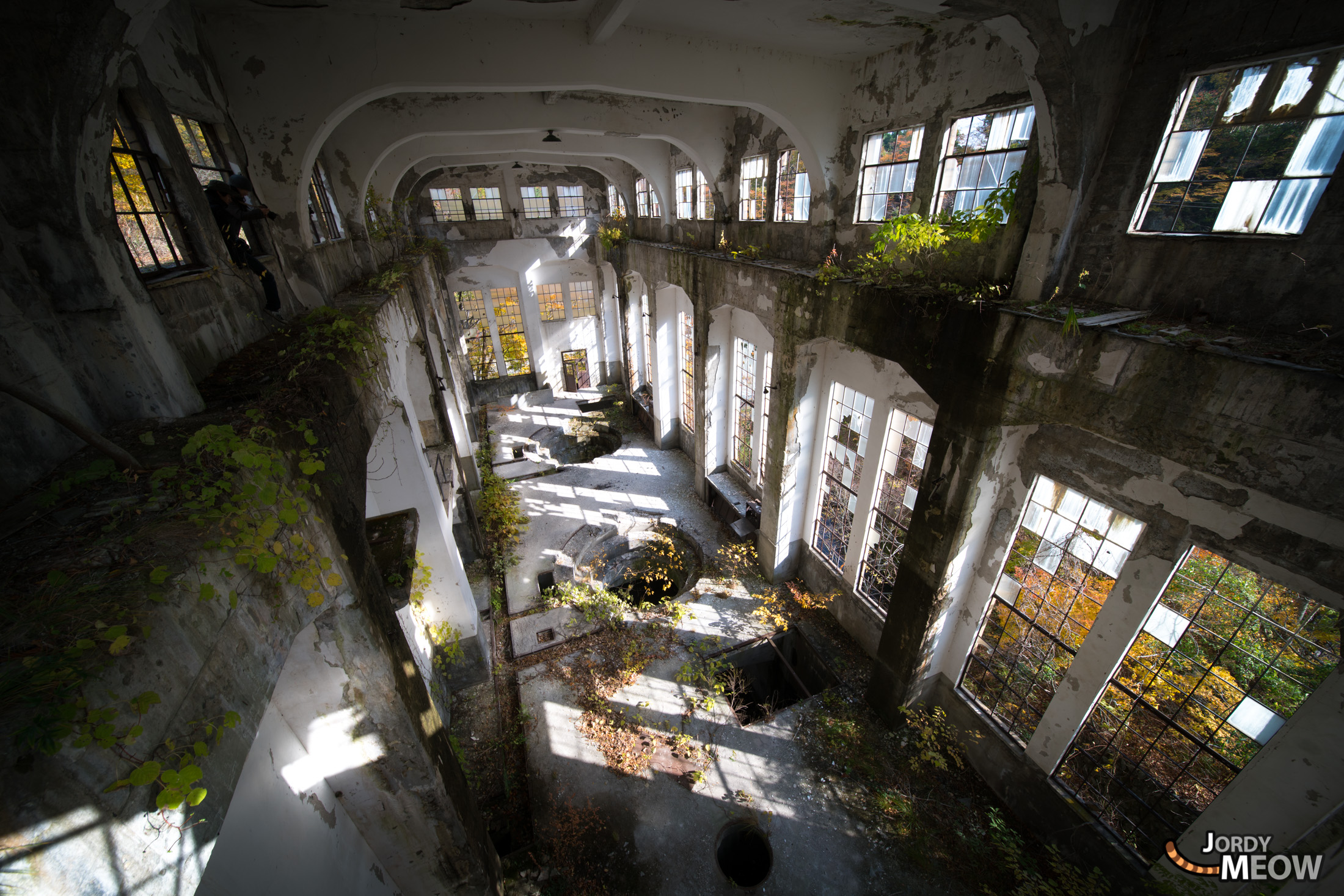
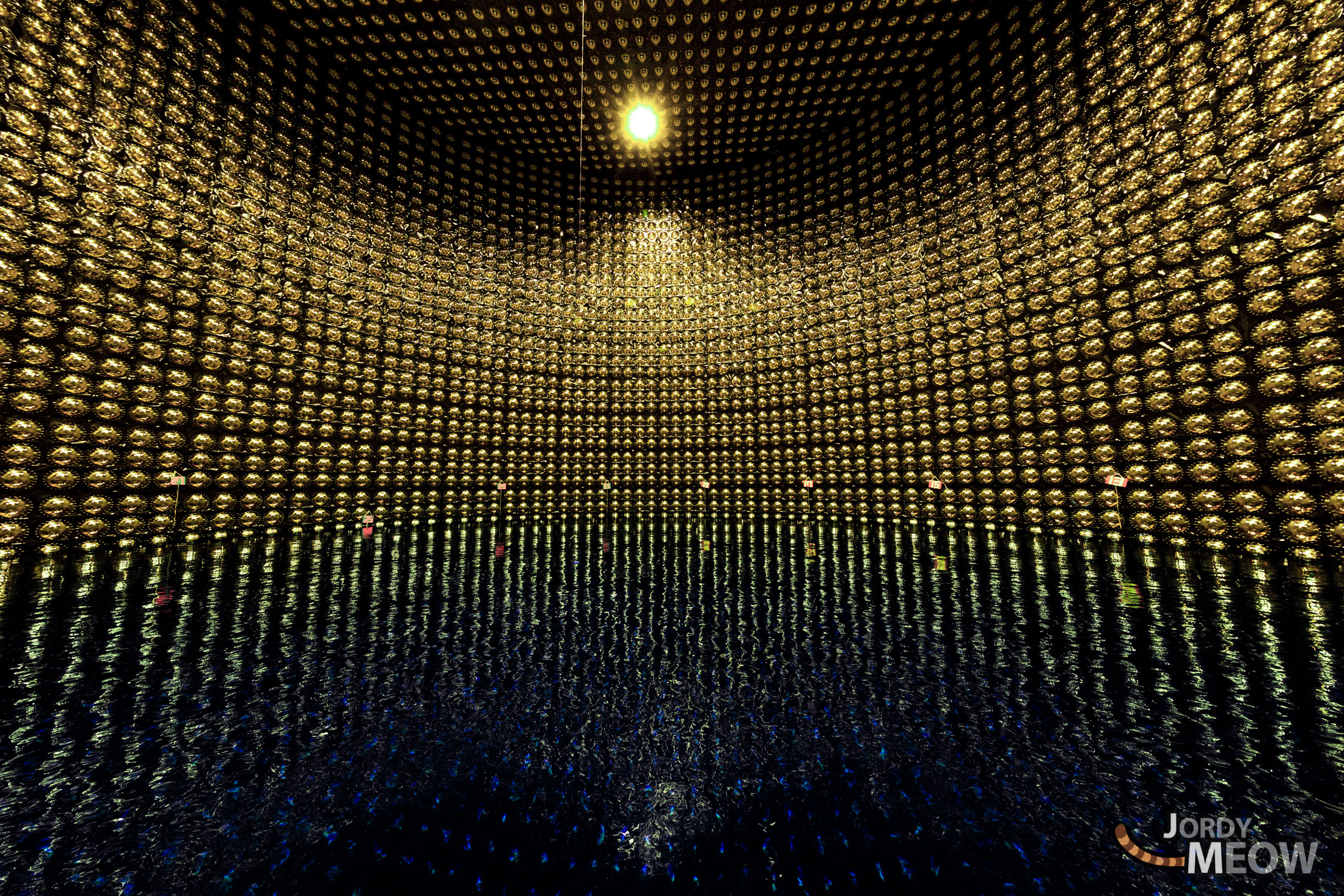
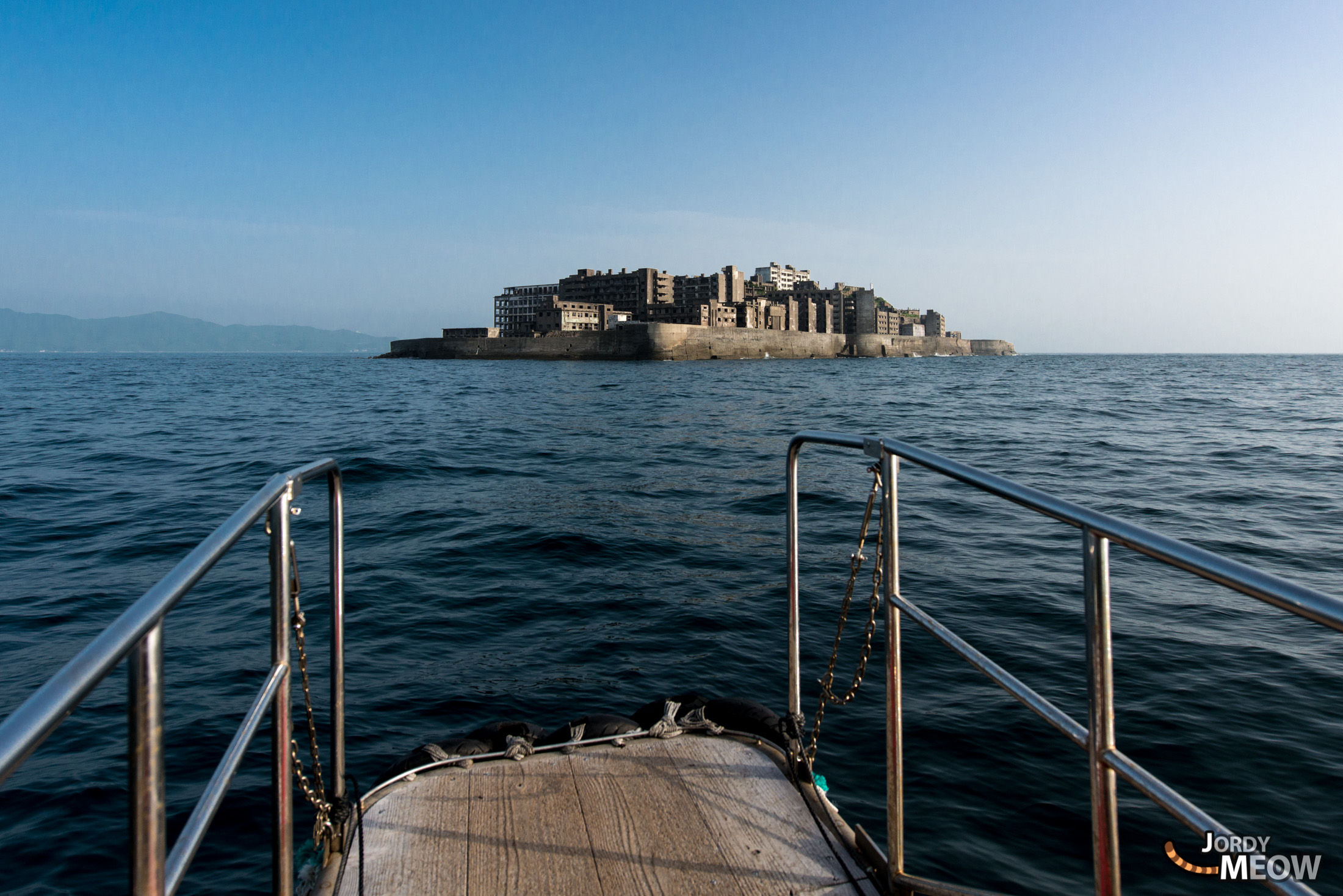

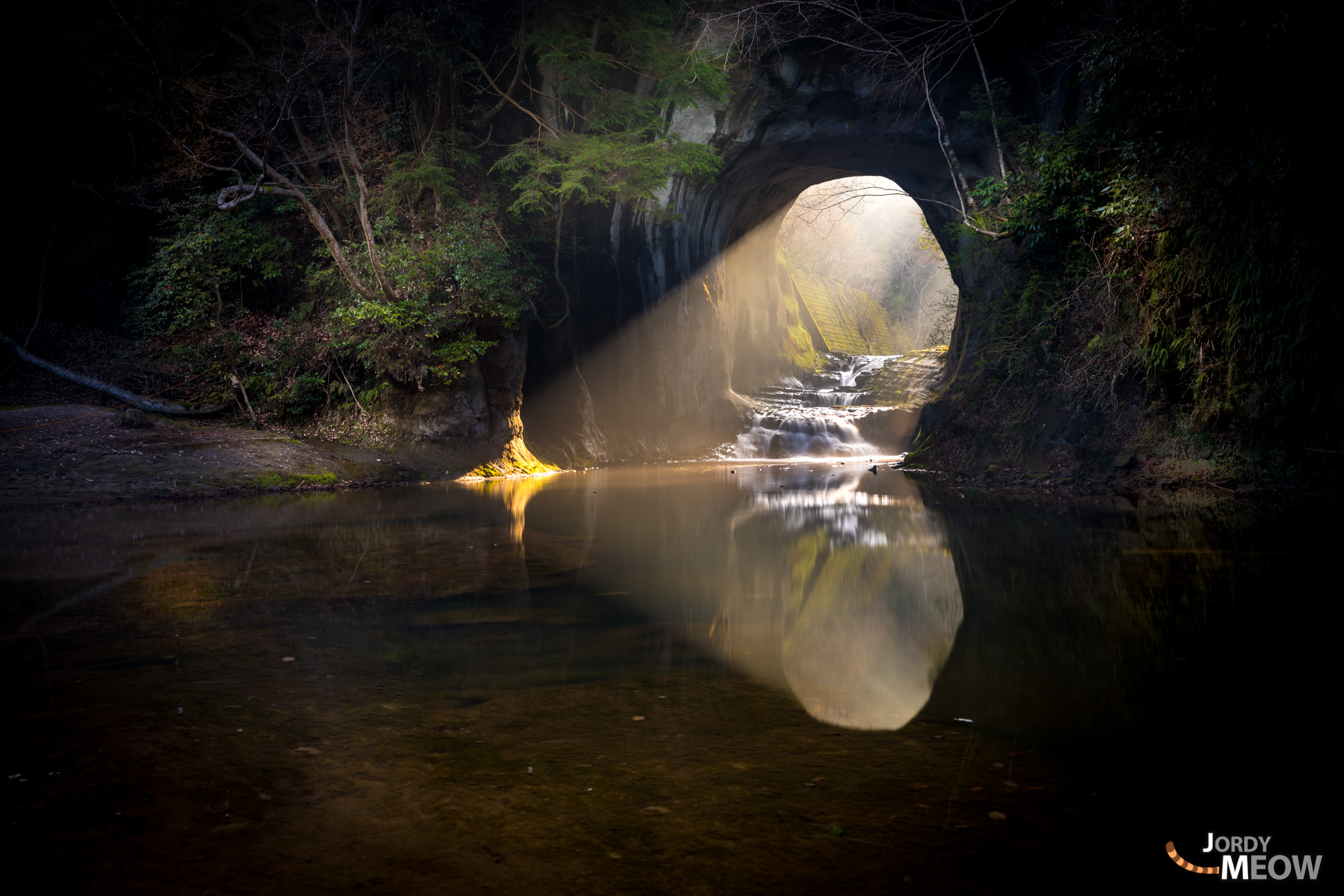











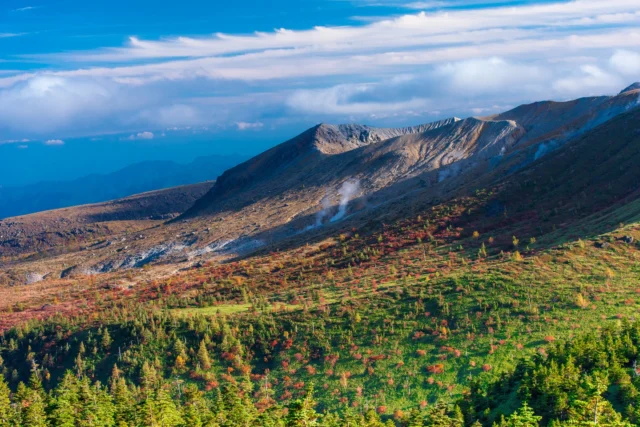

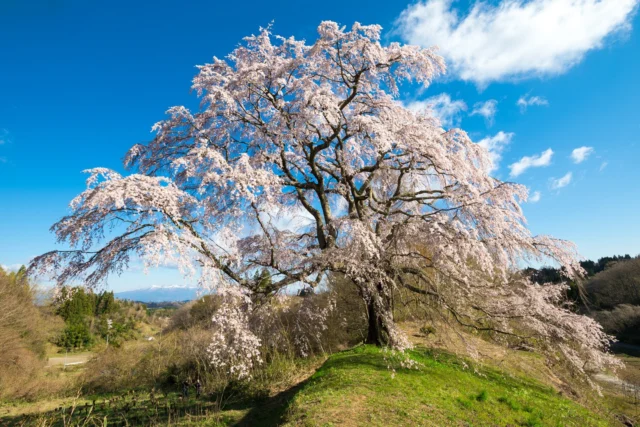
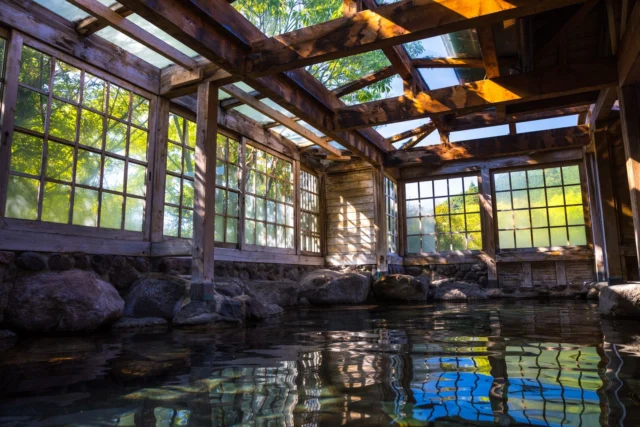

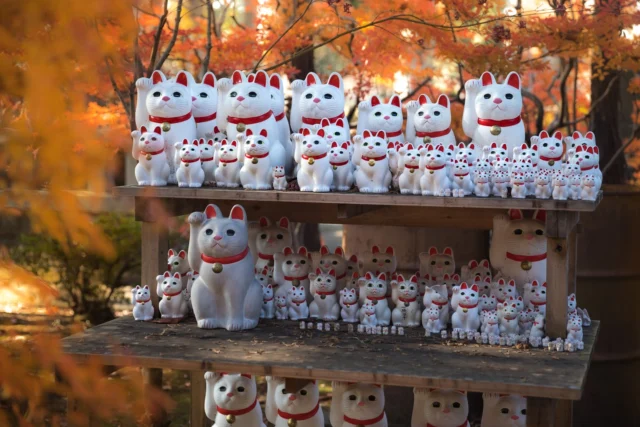

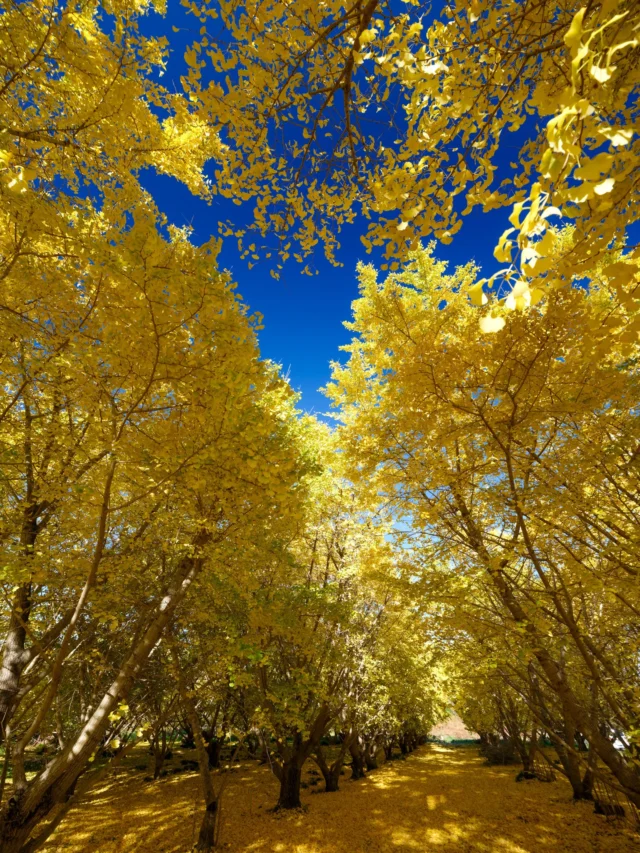

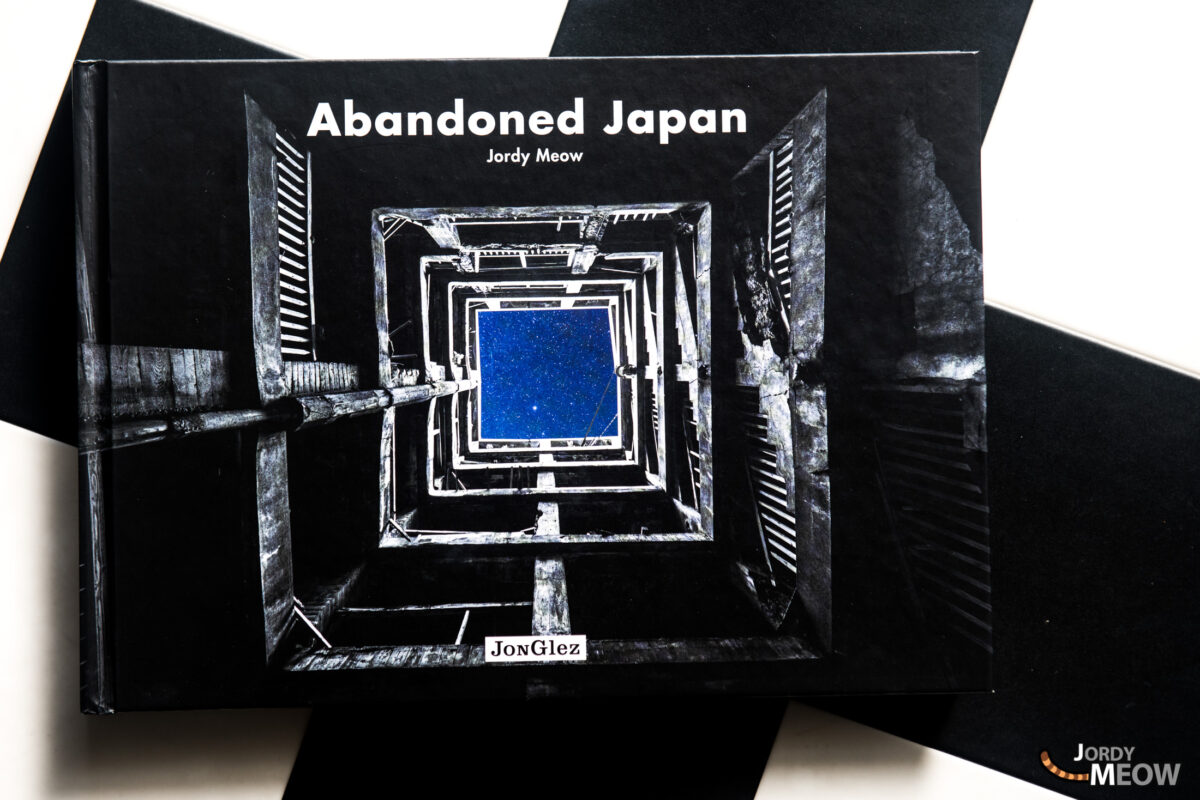

















You mentioned the dust, but things looked remarkably clean, if your guess was correct about when the home was last used/entered. Even an undisturbed house would show more dust than we see, after just a few months. Are you sure someone hasn’t been there more recently to clean up/check up on the house?
The first floor being demolished, I doubt that any “normal” people would venture inside the house for cleaning it. And believe me, it’s veryyyyy dusty. I opened one of the window when I was there just to avoid breathing too much dust (not sur it helped). Did you check my previous article about this house? There are more photos and you really can see the dust. The very clean photos that you see in this article are from 20 years ago or so, that is why 🙂
You mentioned the dust, but things looked remarkably clean, if your guess was correct about when the home was last used/entered. Even an undisturbed house would show more dust than we see, after just a few months. Are you sure someone hasn’t been there more recently to clean up/check up on the house?
[…] by Jordy Meow and text by Jing Meow. The Royal House: “華麗なる一族” and The Royal House: A Journey to the Past on Totoro […]
Hello!
I went to Royal House last week, and I can say that this house know is nearly in ruins. Impossible to go upstairs, and there is a big hole in the main floor. It looks like people had enjoy a party inside. So sad!
I actually also went back one month ago, I was just passing by and I wanted to check is state. It indeed changed, and the worst of all is that it has been vandalized, especially upstairs (I could still access it, even though it became insanely dangerous). I posted my last photos on Metropolis, here: https://metropolis.co.jp/travel/haikyo-corner/royal-house-haikyo/.
It’s very sad seeing John’s picture being painted like that.. He seems to be a kind and good person. Youngsters these days could be really disrespectful..
He was obviously a great man. The person who did that had probably no idea of who he was… or what they were doing… I can’t look at this house anymore or my photos, I just feel way too sad.
im so sorry, i would be sad too, how could people be so disrespectful 🙁
some one should grab the artifacts (photos, and that sort of thing) to preserve them before vandals destroy the lot or this family will disappear forever
Lee (TokyoTimes.org) contacted the closest persons that there is to this house already (one year and a half ago I believe) but no one cared. Since, as you feared, the vandals gave the house a little visit (https://metropolis.co.jp/travel/haikyo-corner/royal-house-haikyo/)…
That’s really TOO bad. And now how people can be still surprised that we try to keep those locations secret?
how strange no one cared, such artifacts could have easily been preserved
this is just awesome, i was reading all of this all this evening. better than watch a movie. thank you so much for share this. greetings from chile.
I’m glad you enjoyed it that much! 🙂 You seem to be the right person to ask that then: what do you think of the rest of the website? Not enough stories and details?
Thank you for sharing their story! i often times look at old photos and trinkets and wonder what people were like and what their stories were. I loved the work you put in to find out! Great photography!
Thanks again Andrea, it took many days to figure out the story and all, especially since I don’t read/speak Japanese!
The story and photos are absolutely beautiful and you are absolutely brilliant for investigating the story. Can you not send the story to John Jerwoods relatives or the John Jerwood foundation?
Unfortunately there aren’t any relatives anymore… there is only the Foundation but they don’t seem to care about this house and the stories at all 🙁
Hello, just came across your blogs today, I was absorbed in it for hours and so far this house is the most intriguing for me. Really appreciate all the info you worked hard to obtain. I feel like I was in the past for a brief time and the only thing left is the dust and emptiness the house has left. Also I just finished eating, I could not stop thinking of that Popo chan and it disturbed my appetite. I suppose I have a thing against dead pigeons.
Hey Maurice! I am really glad you enjoyed the website. But I do agree, the pigeon part is not the nicest, especially considering that in my hobby, visiting places which have a lot of birds is really not healthy, and can be even life-threatening!
This is a real detective job, excellent!
I really enjoyed the thrill to find the true about the family. Good job!
Thanks Arnaud!
If Kuma Kawaii died in 1965, she can’t have known Po-Po-Chan (lived from 1972 to 1979). I think something is wrong.
Indeed, something is wrong. I double-checked the dates… yes, the pigeon was the dear friend of one of the sisters, Kiyumi !
im so glad you researched, what an interesting story and history. like i could see the life in the house. very impressive. thank you for sharing
You’re welcome Sam! When I first visit the place though, I couldn’t see anything clearly; just a lot of information everywhere, scattered, and I had no idea at that time that I would grasp the whole story 🙂
I’ve been browsing through your site for hours now! I LOVE looking through abandoned buildings and places and was completely thrilled to visit these mysteries. Thank you for searching into this story. I first read about the house and saw the pictures and became increasingly curious about the story behind everything. I can’t tell you how relieving it was to see that there was a follow-up explaining the Royal House!
What do you do with the artifacts that you find? Did you sell or donate that extinct document? Just curious!
Thanks for the awesome story and exciting entertainment!
Thanks you @Sally for doing that 🙂 I don’t do anything with them, of course, I just let them where they are. We are not supposed to touch anything. But yes, maybe he should be part of a museum or something, but it’s a very tricky and difficult subject.
You are not supposed to be in there in the first place, seems kinda silly to hold a do not touch standard after you already trespassed. Things could of been saved if you had the inclination to.
I am not sure it’s trespassing at this point, the place is totally abandoned. Things could have been saved but how? You realised that I get access to this kind of places because people kindly shared this with me, and they entrust me not to steal anything… I cannot do much, except document what I find.
I was completely captivated by the story, your investigation is great, your passion admirable and your respect too, it was a trip to the past, thanks for sharing it! the house looks so magical. Wish you a great day. Greetings from México.
Thanks I’m glad you liked this article 🙂 Years after it has been written!
Just found the site a few days ago, and I’m really enjoying your adventures- thanks for sharing them! This is my favorite so far.. What a great job leading your reader through the mystery of the house and its occupants. Immensely enjoyable. I do hope you’ll keep it up!
It’s hard to do now, an article like this requires so much work! And at the end it’s just a little humble article on Internet somewhere. I spend more time on the photos now but less on the text. I’m glad I have readers sometimes who goes through everything but most of the time it’s not like that 🙂 Thanks a lot Jeni!
Wonderful story. Thank you for sharing it with us.
You’re welcome Andrew!
Another minor correction – the photo you’ve labelled New York is actually the Strand in London. The opticians is J.H. Steward, now a Santander, and they were probably visiting one of the nearby theatres https://goo.gl/P52qPA
well done
Thank you Ed!
Very poignant
Thank you Puck. Sorry for the very late thanks 😉
Wow great story, I really enjoy your blog lately! 🙂 So sad that there are some people who are ruining it…
Keep up your amazing work!
Thank you a lot! And sorry for the late reply 🙁
Hi! I’m not sure, but looks like a face in one of the pictures. https://uploads.disquscdn.com/images/891c0c69d5ac30f0384e9fcc3f82ef4c11115a1dfc9017e53f5a0ebcce47e32a.jpg
This is entirely possible: this is not my photo, this is a scan of the photo taken by a member of the family 🙂
5
Hello! all right? I wonder if any of the museums weren’t interested about the history of this family of royalty in preserving the family objects as souvenirs or if you have tried to show this material to a museum or collector. I feel like if I leave things there can be lost, stolen or vandalized it becomes so sad for this family history. Thanks
The foundation is aware of the existence of the house and they even made a big book about history of the foundation but mentioned almost nothing about gentleman that started it all, this house, and elements of the story. They seem not to care about it at all. It’s a pity 🙁
So sad. Can you inform how many cities have already been abandoned in Japan even though it’s so small you can still have that luxury? Thank you for replying.